|
BUS TRIP DATE: Saturday 25th November, 2023 F&B Manawatū are offering an opportunity for a guided tour around the Forest Sanctuary and an optional cream tea in the Homestead COST: Approx. $30 per person. This is dependent on the number of people who sign up. Also, an option for a cream tea $15 FOREST SANCTUARY - A Forest & Bird Project The 89 hectare Bushy Park Tarapuruhi forest is a Forest & Bird Project. It is a rare example of North Island temperate lowland forest. Lowland forests such as Bushy Park historically harboured the largest and most diverse communities of native and endemic plants and animals. Bushy Park Tarapuruhi is unusual in that it survived (most lowland forest was clear felled) and it is relatively unmodified, i.e. there has been no logging or burning of the main forest. It was also fenced to exclude domestic livestock in the mid/early 1900s. The site has the strongest protection from introduced mammals that can currently be delivered on the mainland. If you would like to go on the bus trip, please email [email protected]
Dept. Time: 9.00 a.m. sharp Parking Location: To be advised Programme: After morning cream tea, a guided tour of the Reserve, then free time until bus departs at 3.00 p.m. Expected arrival time in Palmerston North 4.30p.m. Fitness Level: moderate (well-formed tracks, but some of the Reserve is up and down) What to bring: Please bring lunch, snacks, water, raincoat, stout footwear and walking poles if you usually use them – and do not forget your camera.
After a short bush bash we got to the cliff edge high above the Pohangina River. From here, a trap line runs through the strip of bush between the road and the cliff. Ian told us about the trapping efforts of the local community and how RECAP had installed this trap line about 6 months ago, while showing us the operation and set up of the first DOC200 trap along the way. We were quite fascinated by the forest with Rewarewa as the main species, mixed with matai, rata, silver fern and lots of others. Particularly noticeable was the thick undergrowth with tree saplings of different ages, including kahikatea and totara. Every now and then there was a gap in the trees, allowing views up and down the Pohangina River Valley with stands of tall forest along the meandering river. Every now and then we would pass a magnificent specimen tree, including a giant rata with 13m circumference. Trap after trap we inspected was empty, until we came across one with a stoat! It was the first one ever caught in this trap line. A good result even though it remained the only catch for the day. At the end of the line, we met the road and walked back to the base in no time. Pohangina Base was used by DOC rangers to carry out their work in the area, before it was closed and became a bookable accommodation facility. Last year it was renovated and we had a cuppa and a good look around before heading back home. (Text by Jorinna)
A group of 25 people turned up at the Hoffman Continuous Kiln in Palmerston North, despite the decent rainfall in the weather forecast. David introduced us to the history of the area, right back to the Kiln´s construction in 1904. It was fascinating to see the various stamps on the displayed bricks and see on the photos how the Kiln used to produce them. After the buildings retired and got damaged by earthquakes, a lot of work has been done to restore and develop it for everyone to enjoy. David also showed us around the kiln tunnel and explained how it used to operate, before we left the site and walked down to the former pit. This is where the clay for the kiln was sourced, before it was used as a wasteland. About 20 years ago, the local community started to establish a plan to restore the site and turn it into bush again. Before dropping down into the pit, we could overview the entire area and were impressed already. A beautiful patch of bush, with walkways and waterways running through it. Down at the car park we met Beth from the Pit Park People. She took us for a walk and told us the story of how this place became beautiful again. She had been involved all the way through and talked about the tough beginnings, until the project got council and many locals into their boat to make it all possible. The seedlings planted only a few years ago are now trees that are closing up to form a canopy. Just as beautiful are the established wetland areas with flaxes and cabbage trees and lots of other species. It was and continues to be an enormous amount of work to look after it all and establish this oasis of native bush in the city further. Schools and other groups are getting involved to help but the Pit Park People are in need of more helping hands from the community. A worthwhile project to invest your time into for sure! (Text by Jorinna)
Hugh Stewart from the Forest & Bird Rangitikei Branch had kindly agreed to show us around some of the reserves the branch is looking after. Unfortunately, Hugh had to step out as he developed mobility problems the day before the trip while working in one of the reserves. After a short discussion in the morning, at the meeting point, our group of 15 decided to explore the reserves without a guide. Dr Jill Rapson had supplied us with an interesting field guide document for the reserves, giving us a good overview of the history, geology and flora of the area in advance. It was a beautiful summer day. We arrived at Pryce´s Rahui just after 10am, starting our walk following the red route. The track was well marked, looked after and some board walks covered swampy areas. As we passed through some kanuka forest, we started identifying some of the trees and shrubs with our combined knowledge. Soon we found ourselves surrounded by more and more mature kahikatea, mixed with matai, some totara and healthy undergrowth of titoki, kawakawa and lots of others. Particularly fascinated we were by what appeared to be a huge vine growing right up a tall kahikatea. However, the name plate identified the plant as puka, an epiphytic Griselinia species - which meant that the “vine” was actually a very long air root. We heard and saw some kereru, fantails, a kingfisher and others. A magnificent bush remnant for sure! Only as we entered the open areas with flax, cabbage trees and native vines, we started to see some weeds: blackberry, old man´s beard, nightshades and other pioneers. Back at the car park, the group continued to Hunterville for a lunch break in the park before heading to Sutherlands Mangahoe Reserve. It took a bit of navigation and joined effort to find it but we were successful in the end! The yellow loop track here turned out to be slightly more challenging, and was also quite narrow. The bush featured some big kahikatea, silver fern and other tree species, with supplejack vines hanging off them. This, together with the sound of cicadas and bellbirds up in the canopy, made for a tropical scenery. From our track, sidling above the forest valley, it felt almost like being in a cathedral held up by kahikatea giants. Further on, the kahikatea were much younger and grew very close - almost like bamboo! A very unusual case. We eventually crossed the valley floor, climbed up the opposite side and made our way back to the road and back home. (Text by Jorinna) Trip organiser: Jorinna Prinz, Anthea McClelland
Trip guide: Andrew Broome Destination: Waitarere Forest When we arrived at Waitarere Forest around 11:00, most of us probably did not have many expectations of what we would find here. Andrew, who had kindly offered to be our NZ orchid expert for the day, had suggested this place. But this was a pine forest with near-zero native vegetation - in fact, almost no vegetation at all underneath the tall pines! A strange scenery, quite the opposite of the lush New Zealand bush. But just a few minutes after entering, we encountered the first patch of big greenhood orchids (Pterostylis banksii). Walking past without orchids in mind, one would most likely class the scattered green leaf blades, emerging from the pine needles, as a bit of grass. Looking closer, two or three delicate flowers of stunning complexity could be spottted amongst all the leafs. We were lucky - these ones were flowering a bit ahead of their time. We continued up the next hill and found our second orchid: The spider orchid Corybas trilobus was not flowering, but as we walked on we saw its kidney-shaped leafs popping up everywhere. As we proceeded, we never walked more than a few steps until someone found another patch of orchids. It was a bit of a treasure hunt but also a lot of fun to look into the world of orchids. In New Zealand, you would want to bring a magnifying glass to be able to discover all the beautiful details of these tiny plants. We all forgot to bring one except for Jill! One after the other we had a close look at Thelymitra longifolia, Microtis unifolia, Chiloglottis cornuta and others. Andrew also told us a bit about their lifestyle, like their symbiosis with fungi, their need for open disturbed ground where they do not get outcompeted by other plants, and that they mainly get pollinated by fungus gnats or are self-pollinating. Just after lunchtime, we headed back to Palmerston North. It had been a short but fascinating walk! (Text by Jorinna)
In many ways, this was a special event. Not only was it the first Forest&Bird trip after a long break partly caused by Covid-19, this time we were not just going for a walk. We had a job to do! Earlier this year, the Forest&Bird Manawatu Branch had purchased 16 of the 31 DOC200 traps needed to set up a new trap line on the Deerford Loop. Ian Rasmussen, a passionate pest control volunteer from RECAP, initiated the idea and pulled all the strings together to make it happen. This is how 9 keen trappers turned up at Limestone Road end on this sunny Saturday morning. All of us were excited to find the entire landscape white - winter had finally settled in! About half of us had done lots of trapping but never set up a trap line before. There was a surprising amount of logistics to consider, but fortunately Ian had already made a proper plan for the entire mission. 6 pack frames got loaded up with 2 traps each - together with a day pack that made a load of around 20kg to carry. The remaining traps and installation tools were carried separately. We split up into 2 groups to walk the loop in opposite directions and off we went. Just a few minutes in there was a stream to cross, then the track went up the hill. The snow certainly slowed us down, and it took a while until we figured out how to best place our feet in the snow and prevent sliding. While installing and setting the new traps, we baited and reset the already installed ones (donated by the Ashhurst Engineering and Construction Company) as well. A few of these traps had flattened rats in them - a first score! However, further up the track we also spotted multiple big rats that looked very alive - they seemed not in the slightest intimidated by the traps on our backs... A party of trampers passed us and stopped for a chat. They were well equipped and were heading right up to the ridge. At the top junction of the loop we had lunch with the other team of our group. All 31 traps were now set! With empty packs we slid back down the steep track, trying not to get distracted by the beautiful scenery. The snow was starting to melt in the warmth of the midday sun... Note: The Deerford Loop trap line will be serviced regularly by volunteers from RECAP. If you are interested in helping with this task, please get in touch with Forest&Bird Manawatu Branch ([email protected]). (Text by Jorinna) Photos: Anthony Behrens, Jorinna Prinz
We met Paul at the new Queen Elizabeth Park Visitor Centre to check out their small lizard garden. It had been completed recently and so the skinks and geckos have not moved in yet. We learned that a good lizard garden needs several things; a sunny spot with lots of rocks, driftwood and other hiding spots. And native plants! Not too many though, as they can create too much shade. There are even plant species that are particularly beneficial for lizards as they provide food for them and their prey. At our second stop we walked the first section of the Escarpment Track. Here we were joined by Pete, another committed volunteer from the Ngā Uruora project. Paul stopped at a few lizard friendly stations and carefully lifted a layer of corrugated tiles, but the skinks took off before we could even see them! However, soon after that we got to a big fenced off lizard garden, and there we saw lots of skinks! There were probably geckos too, but those are much harder to spot. This garden was covered with cardboard (to suppress weeds), rocks and piles of driftwood. In between were lizard friendly plants like the sand coprosma (Coprosma acerosa) and speargrass (Aciphylla squarrosa), as well as a few traps to keep out mice and rats. The Ngā Uruora volunteers are also dealing with other lizard predators, like hedgehogs and feral cats. After a lunch break in the sun with magnificent views along the coast and to Kapiti Island, we turned back and made our way back home. Today we got a glimpse of a hidden and endangered world. And we saw how easy it is to create a space in our gardens for native skinks and geckos... (Text by Jorinna)
On this beautiful sunny day we drove to Shannon, where we joined up with the rest of the group. With 26 people in total, we were more than double of our usual group size. A lot of people joined us this time as part of Conservation Week 2019 and we were delighted that a few members of the Forest & Bird Horowhenua Branch came too. Just out of Shannon, we stopped at the first example of a fish passage, constructed at the stream of the local golf course. Logan introduced us to the challenges that local fish face when trying to pass culverts and other man-made constructions. And the challenges of his team trying to modify these obstacles so that the fish can make it through to swim upstream. The kids in our group had fun climbing around the concrete-embedded rocks too! We traveled to a number of other examples of fish passages nearby, each one with a slightly different situation and design, Logan showed us pictures of how the areas looked before too, and pointed out how willow roots floating in the water and moss-covered boulders help fish to climb upstream where water flows fast. Amazing what those fish can do! Our last stop for the day was the Mangahao Power Station, where we found a lovely lunch spot by the river. Logan showed us another few fish passages, this time in a bigger scale connected to the hydropower facilities. The last one was so well blended in that it took us a while to spot it! (Text by Jorinna)
When we reached Rangiwahia Carpark at 10am and started our walk, we got hailed on and it stayed pretty wet and windy for a while. Thanks to our rain jackets we all stayed dry and admired the beautiful beech forest with scattered pahautea (NZ mountain cedar) emerging from the canopy. About half way, we stopped for photos at the first highlight of the trip, an arching bridge across a deep gorge. From here, the track sidled along a rock wall and eventually reached the bush line, with leatherwood and tussock fields. The hills around us, first covered in mist, became more and more visible. Down coming trampers told us that all the snow on the track had melted, yet we found a few small patches - just enough for a few snow balls! When we reached Rangiwahia Hut at lunch time, the sun started breaking through as if it had waited for us. The hut was cozy and we gathered around the table and the warm fireplace for a longer break. We were talking to the other trampers while watching the clouds lifting off the landscape. Soon we could see the stunning view with Mt Ruapehu, although its peak remained hidden in cloud... After learning about the history of Rangiwahia Hut and also about the lovely paintings on the buildings and about the other tracks in the area, we packed up and made our way back down the hill. A piece of cake after the long climb, leaving more room to enjoy the views, listen and look for birds and photograph plants. (Text by Jorinna)
From the plateau high above the river, Tom showed us where the new highway is going to be built from next year and explained the recent work done to the rivers for banks protection. He also shared interesting facts about river works and how the rivers react to it. We learnt that the Ashhurst Domain area is a former pā site, which is of significance to local iwi known as Otangaki. Their ancestors used the Gorge as a road and stopped in this area for refilling their food, which explains the big abundance of karaka trees planted for food supply. The river island below us was cultivated to grow food too. Now we could see farmed flood plains and wetlands below us in the river valley. After saying goodbye to Tom who was off to his next meeting, we made our way down to the wetlands. A few ducks and some bigger water birds took off as we came closer, and when we found our track occupied by a group of cattle we decided to turn back and hit the bush tracks. Along the way we learnt about different weed species in the area and the control work that has been done over the years. After passing through a stand of big totara, a side track took us out to the cliff of the river valley, where a recent flood had taken out a chunk of bush. Along the path was a line of fascinating basket fungi (Ileodictyon cibarium), and back on the main track we admired the dense vegetation with the giant maidenhair fern, swamp maire and kiekie. There were many birds to hear and to see flying between the big trees, while we slowly emerged from the swamp back up to the plateau to finish our circuit. (Text by Jorinna) |

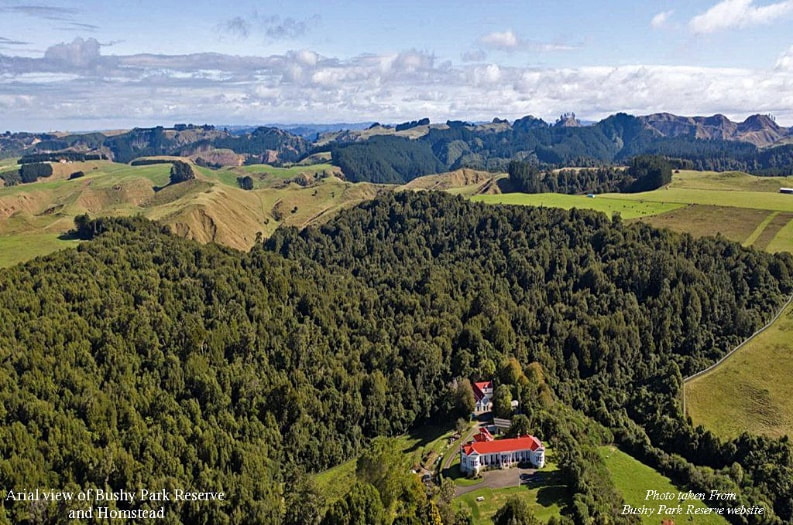
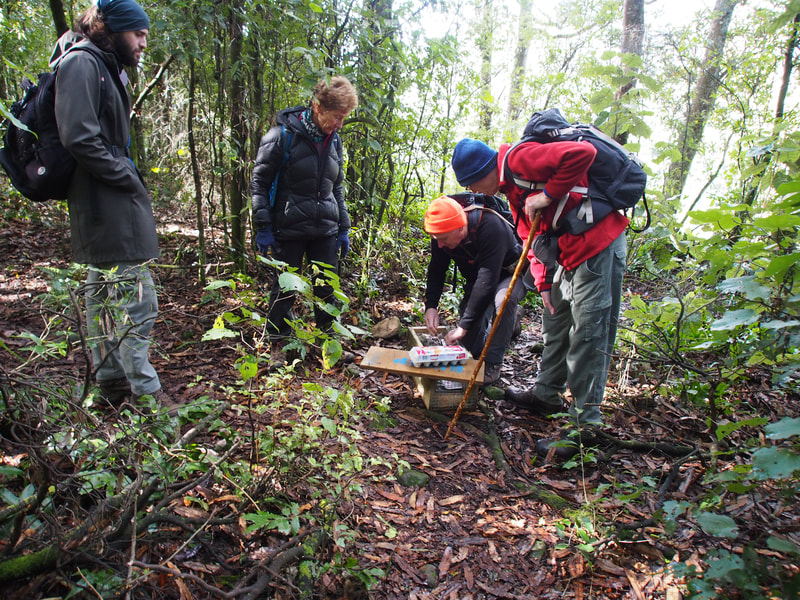
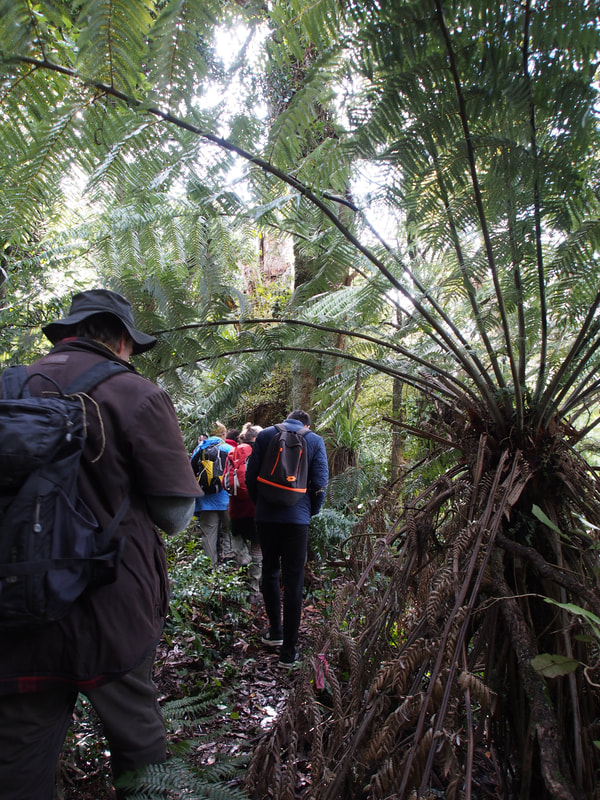
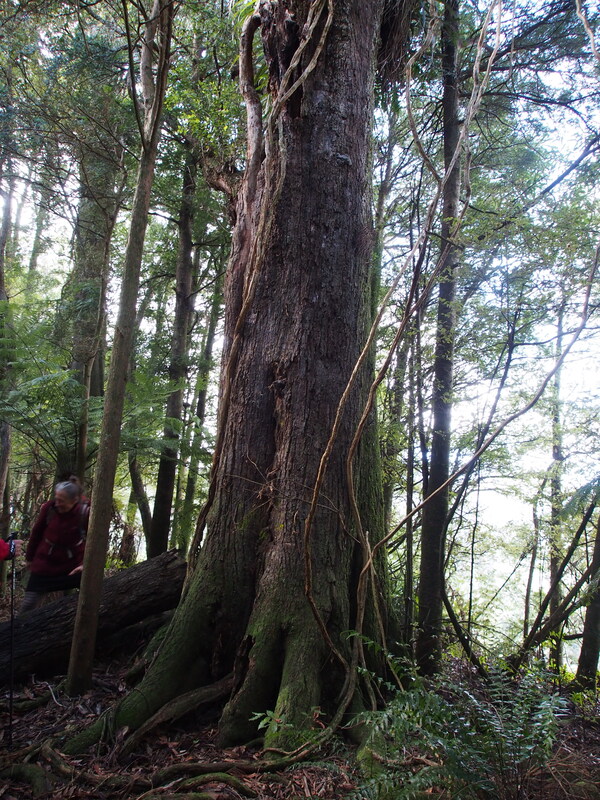
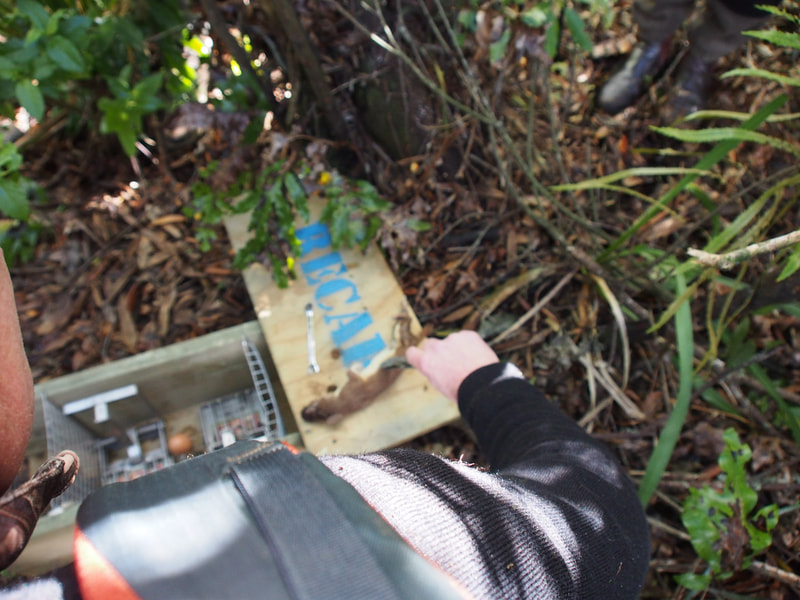
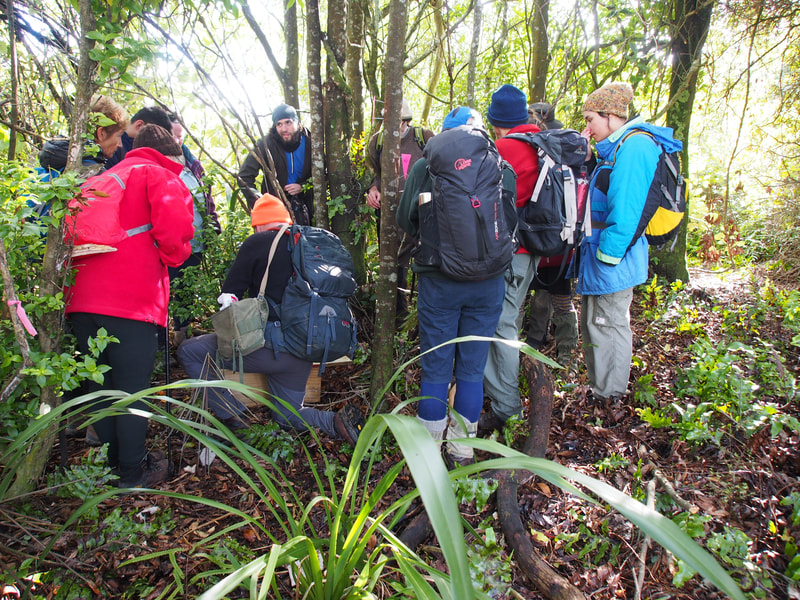
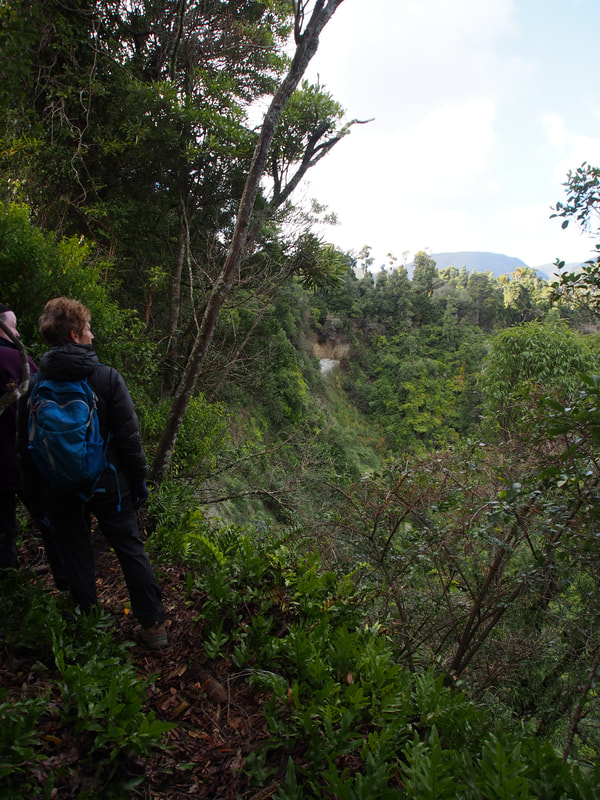

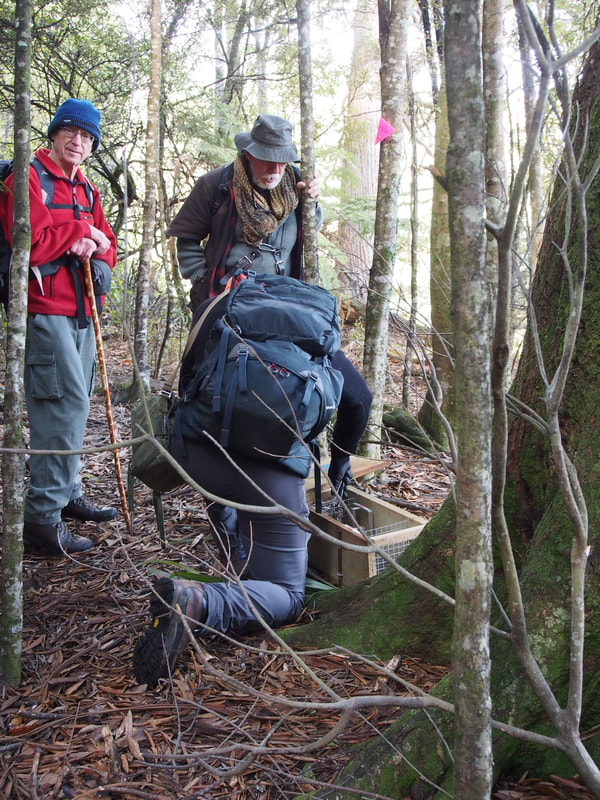
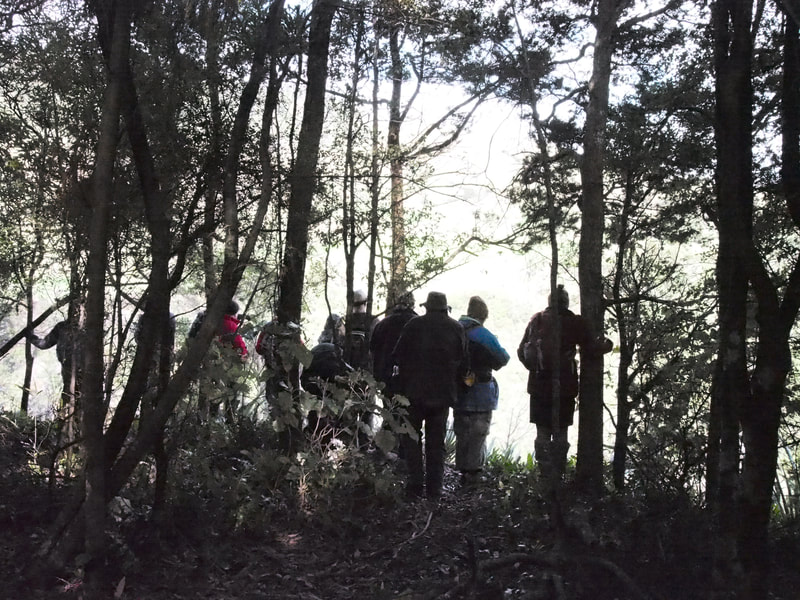
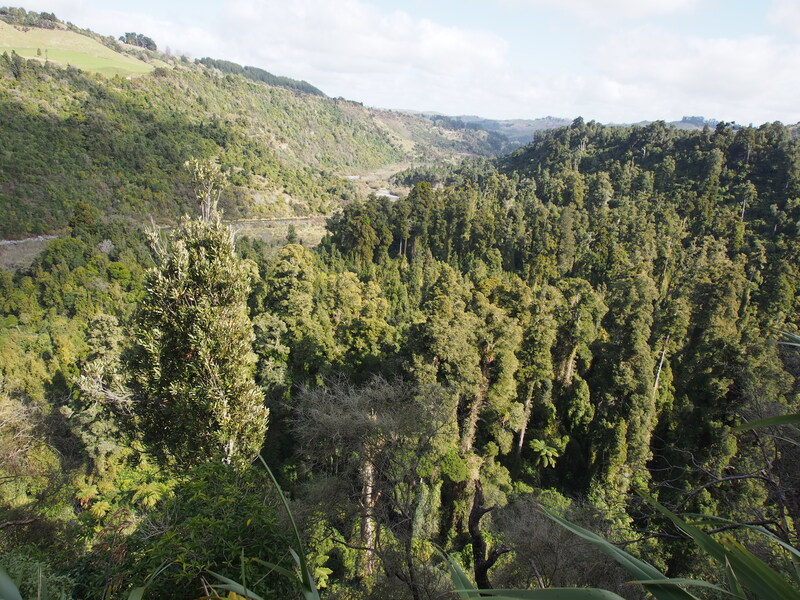
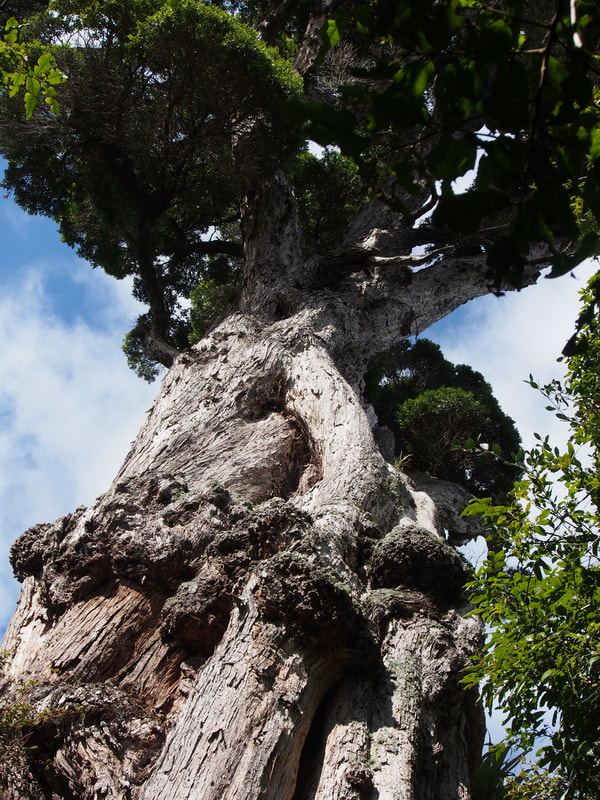
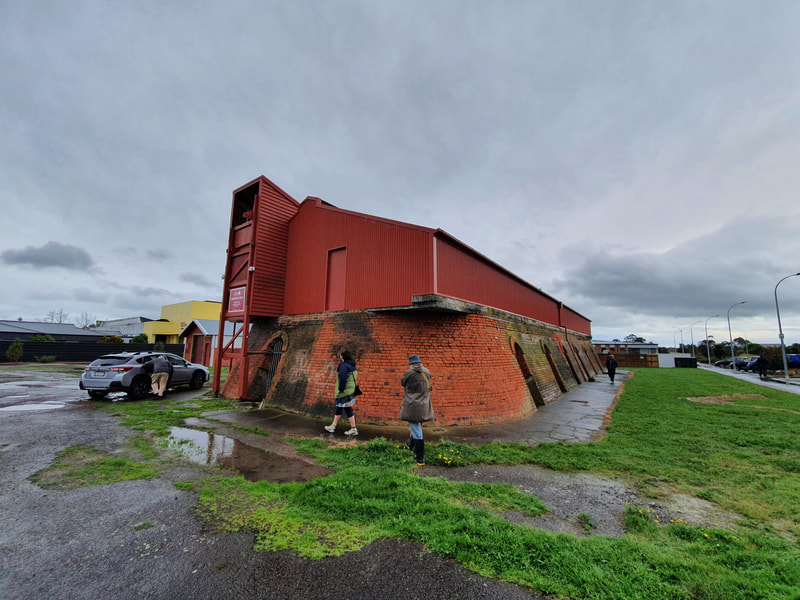
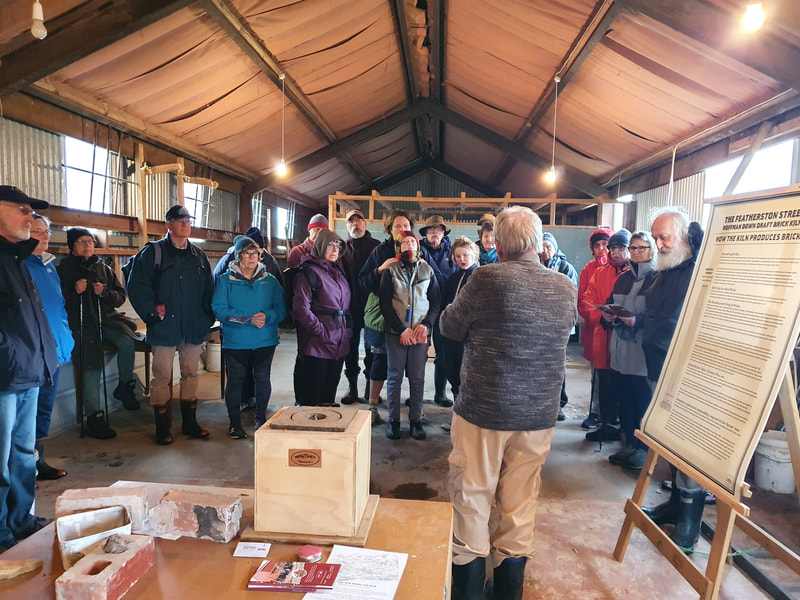
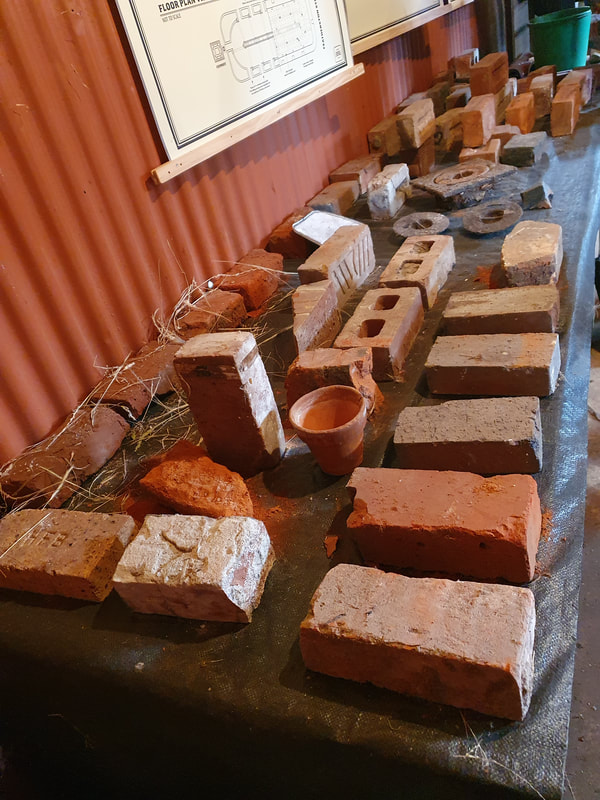
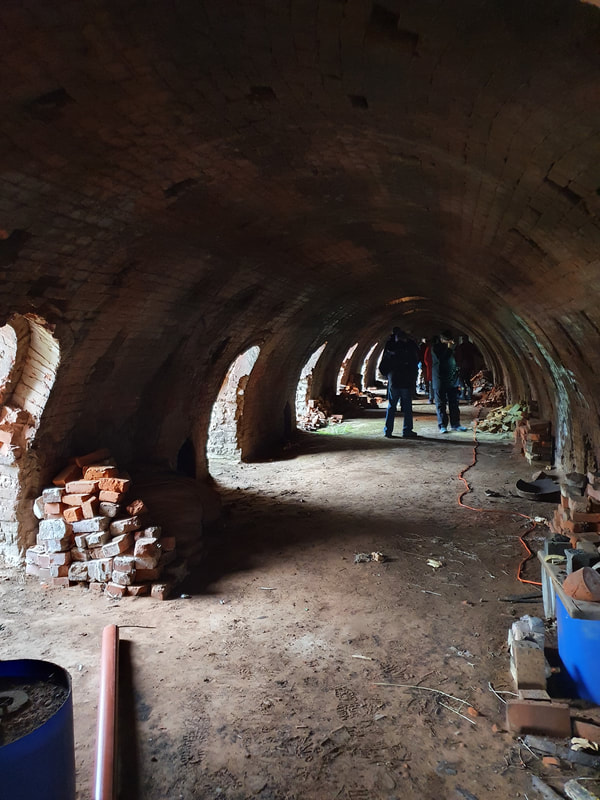
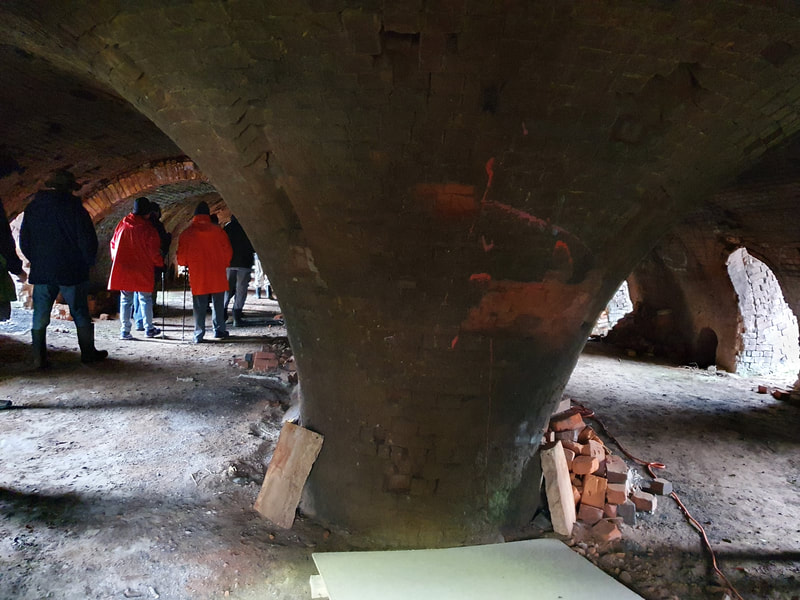
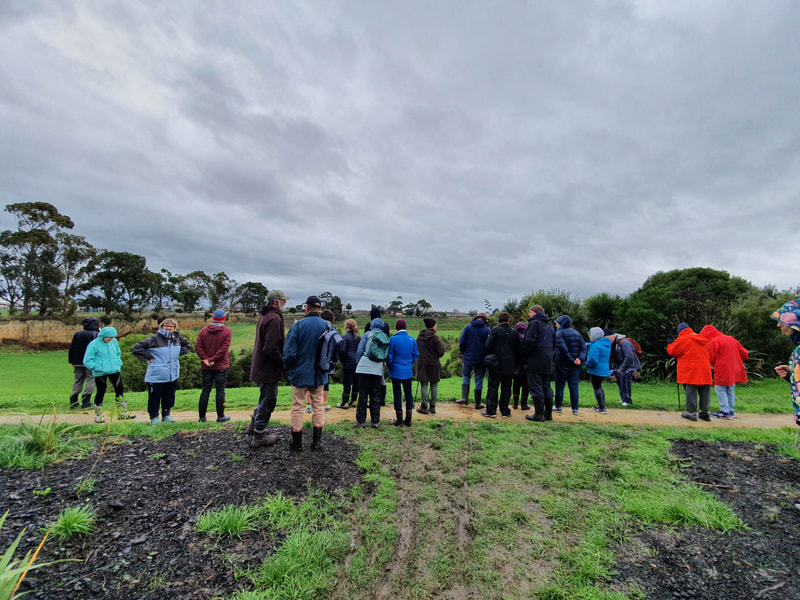
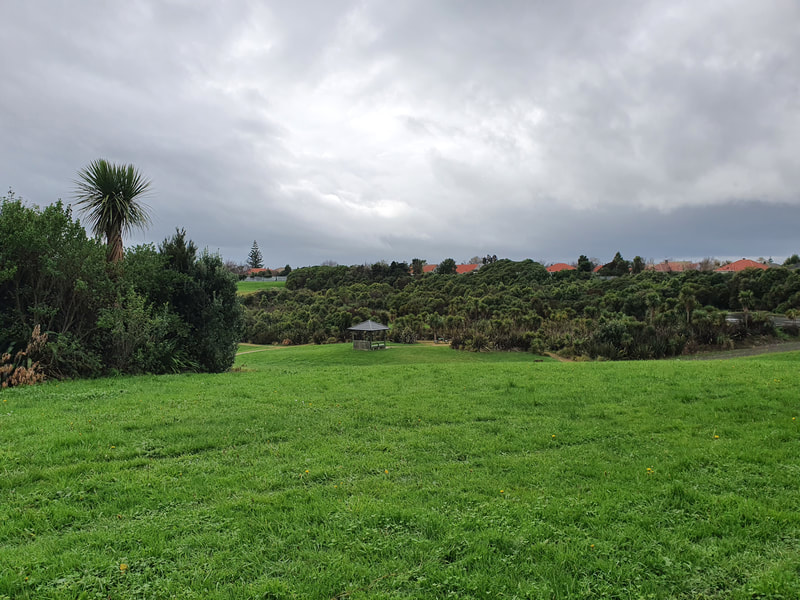
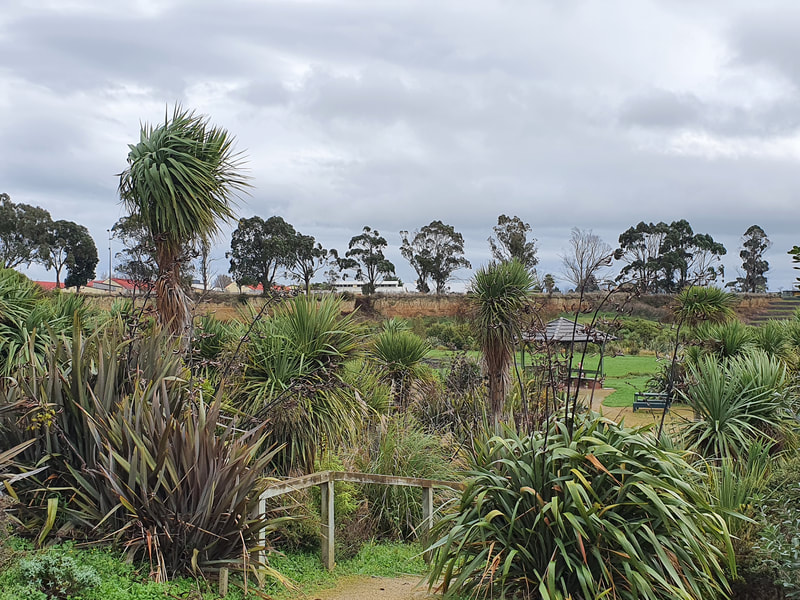
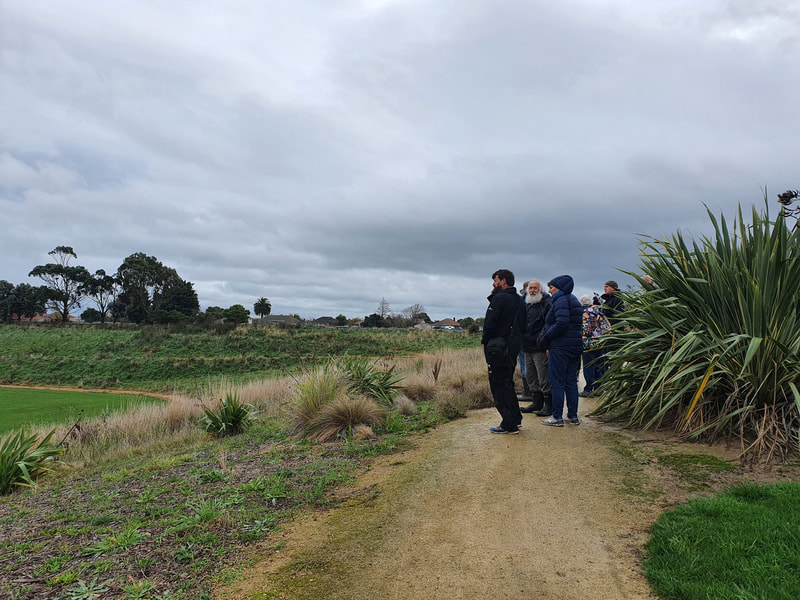
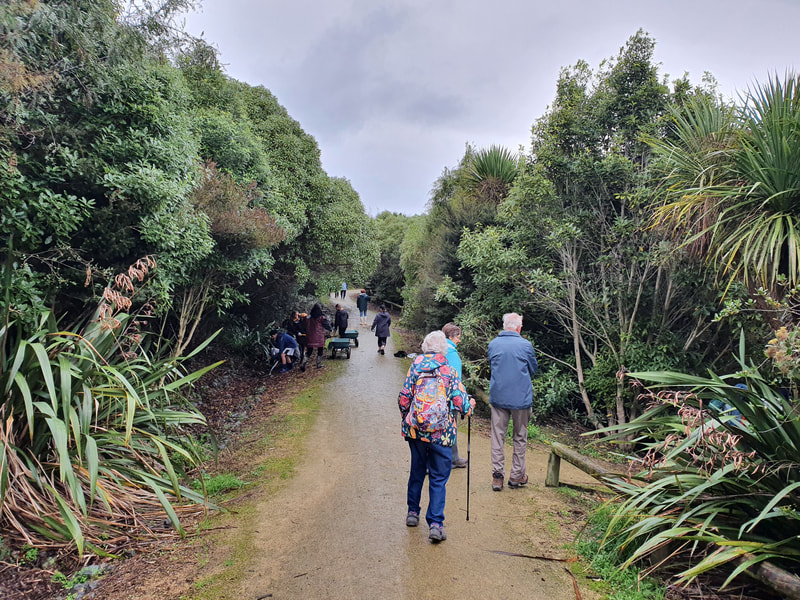
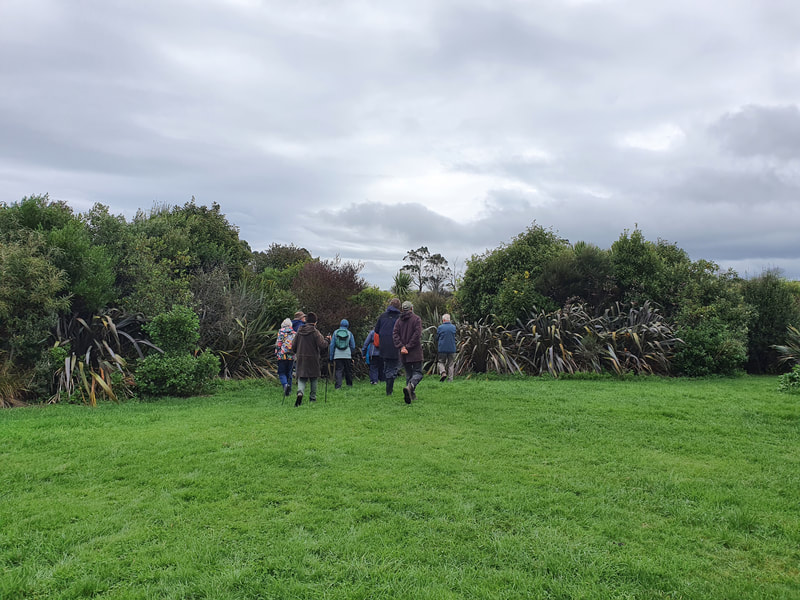
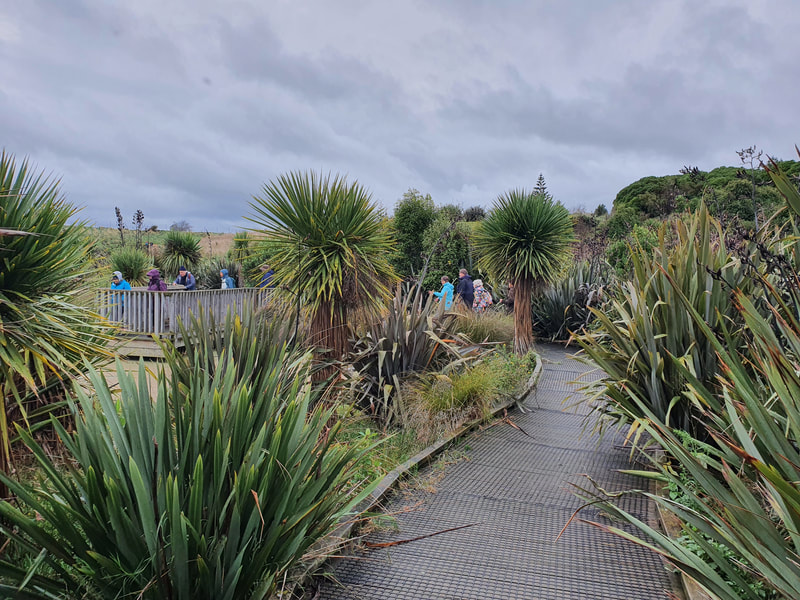
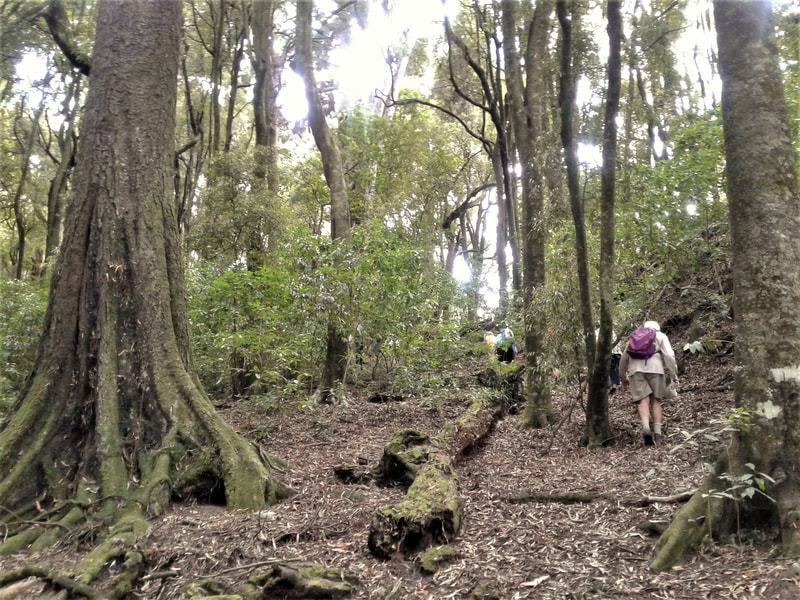
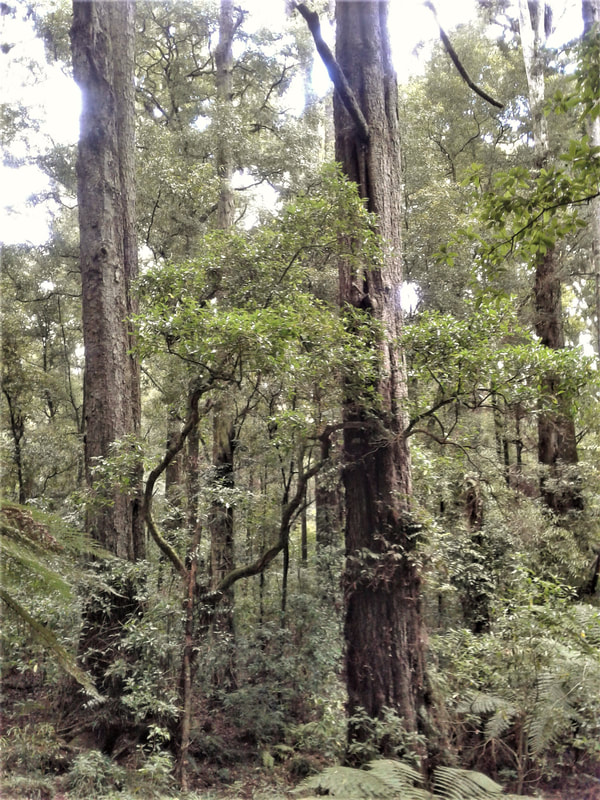
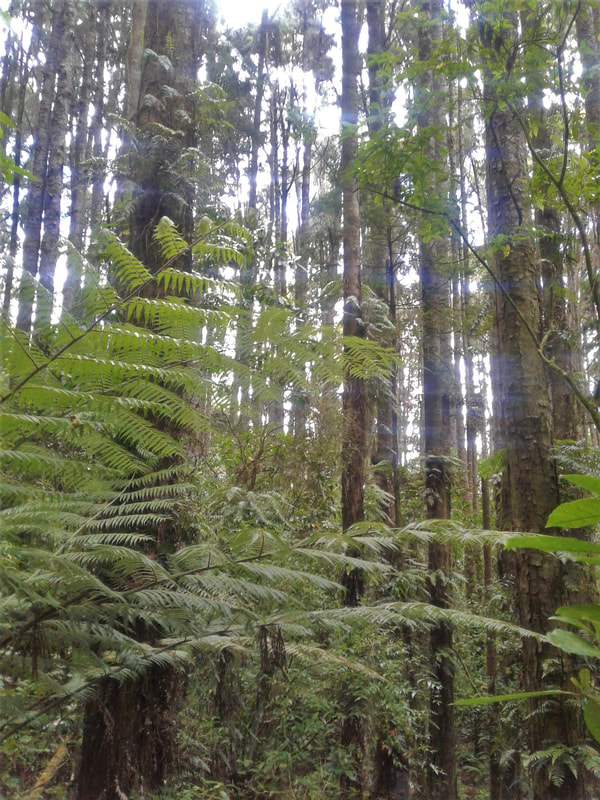
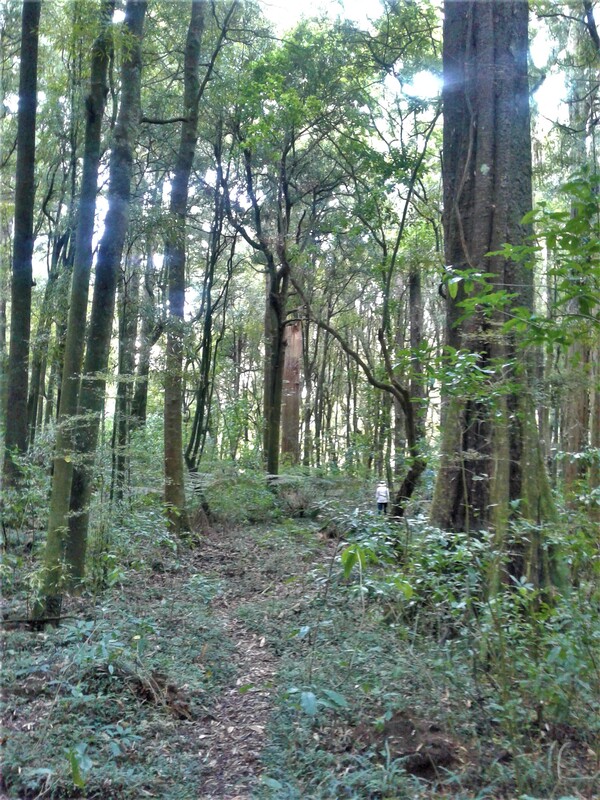
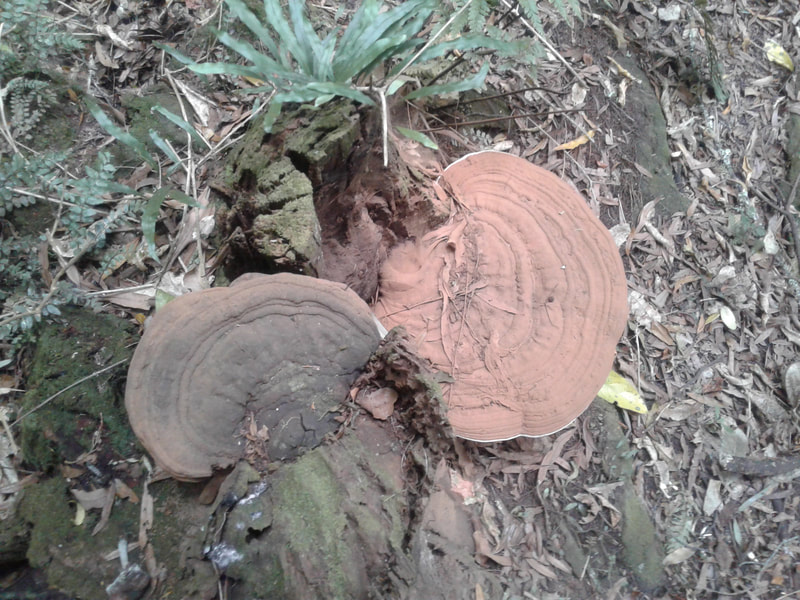
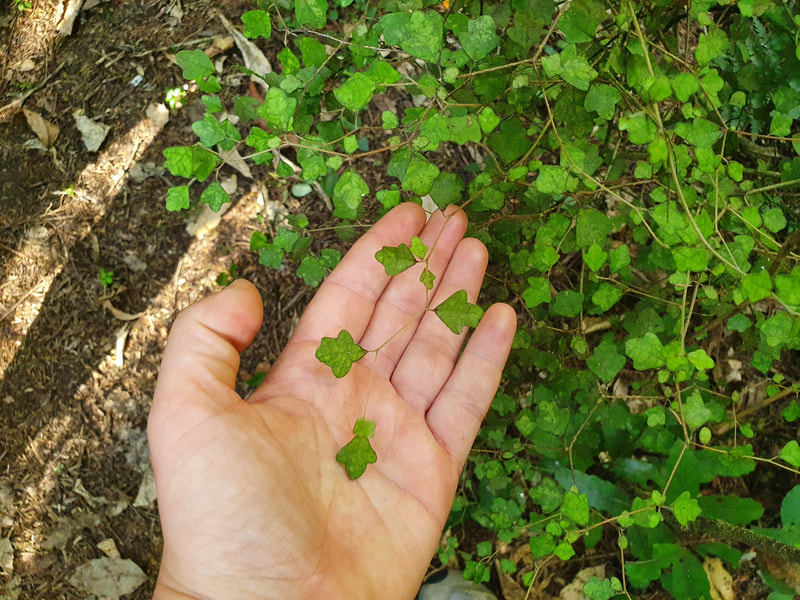
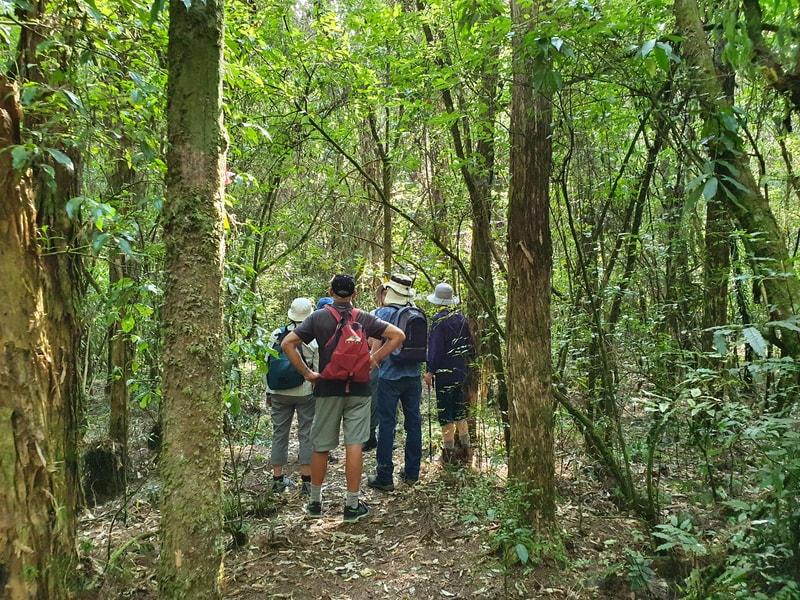
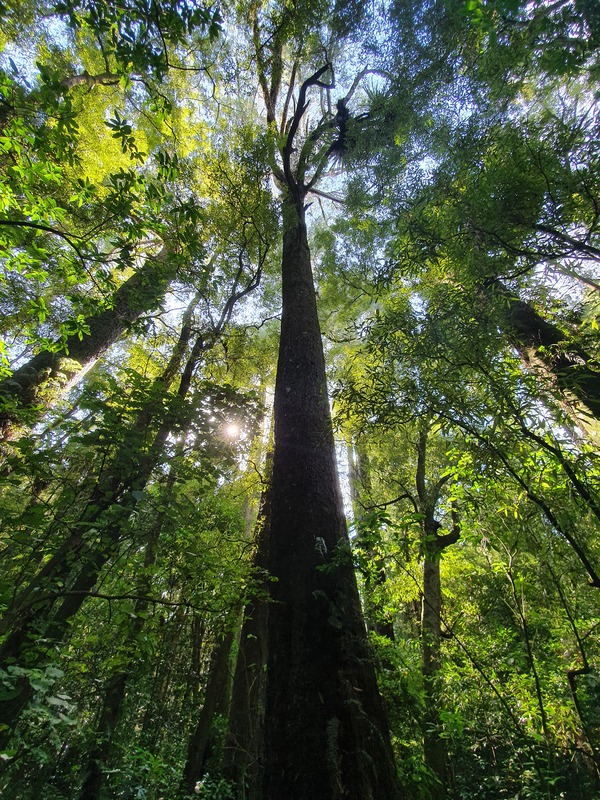
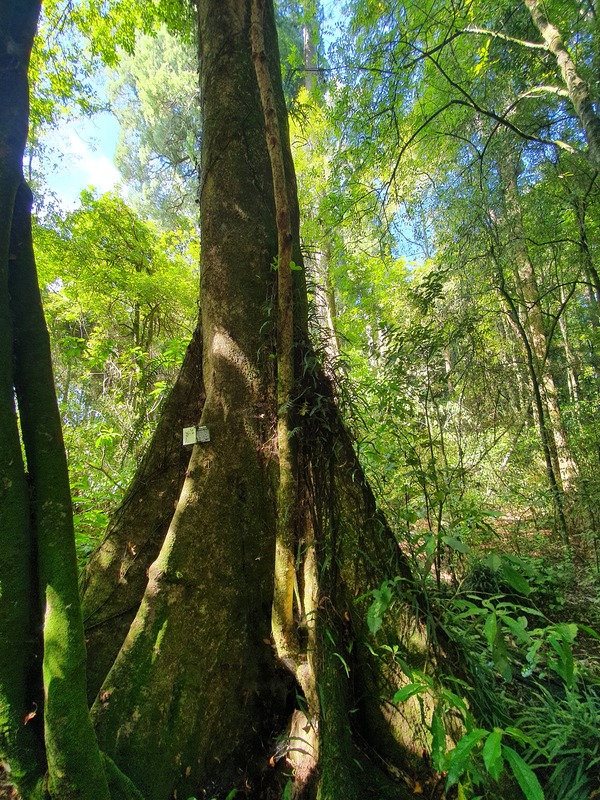
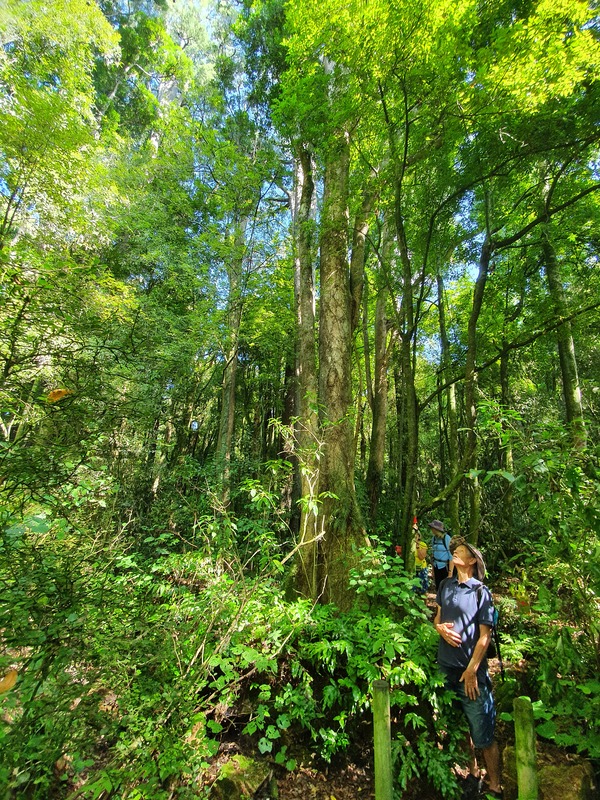
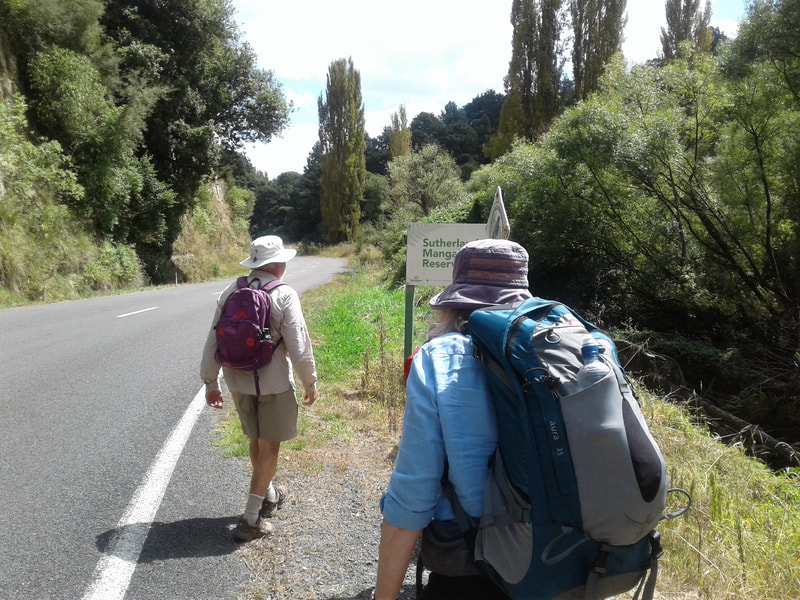
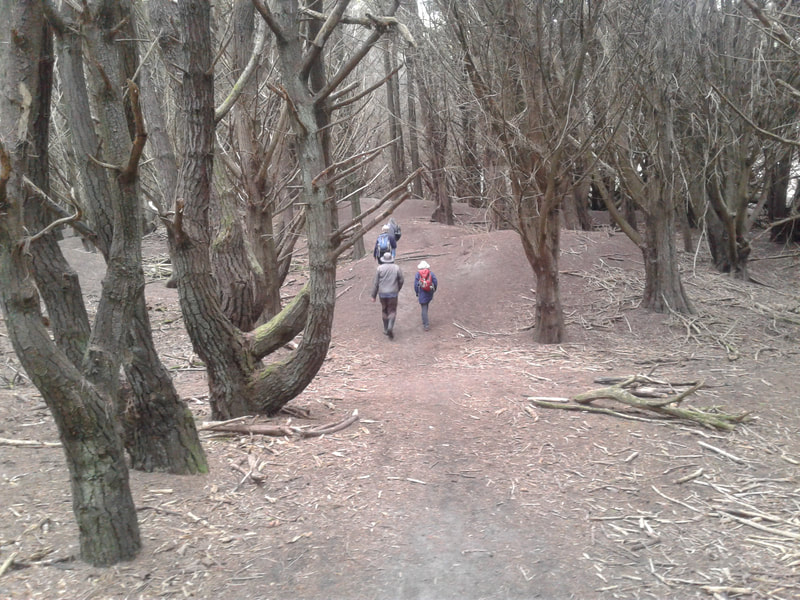
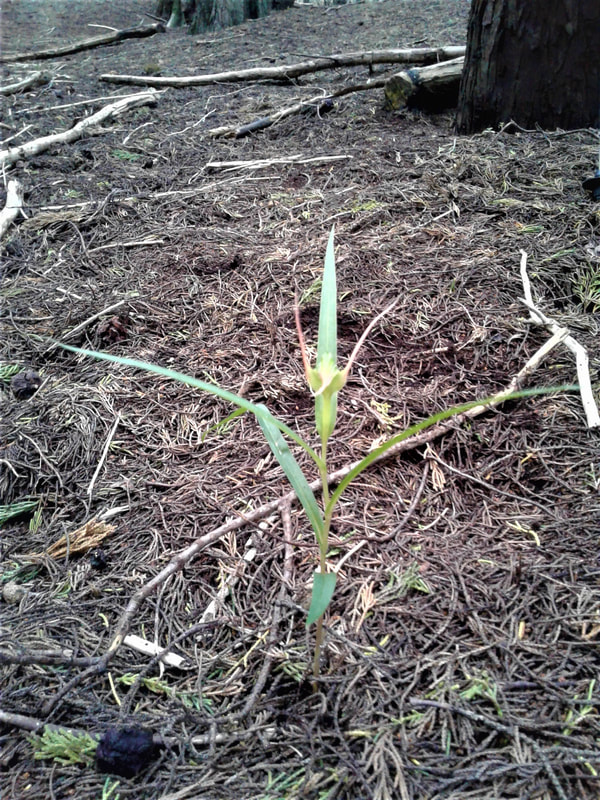
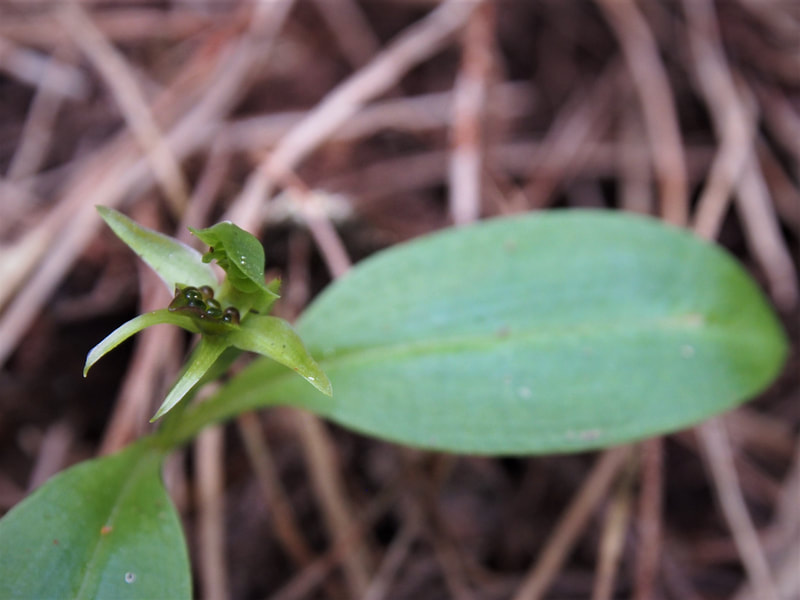
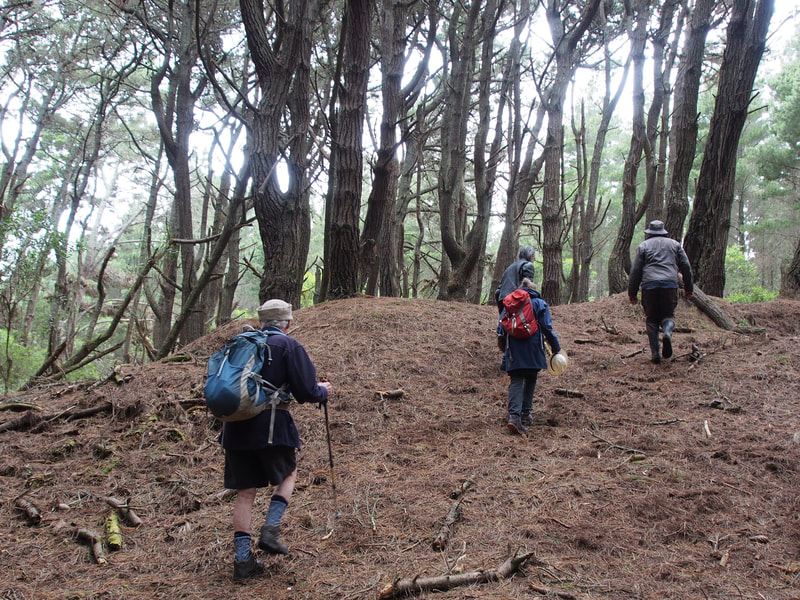
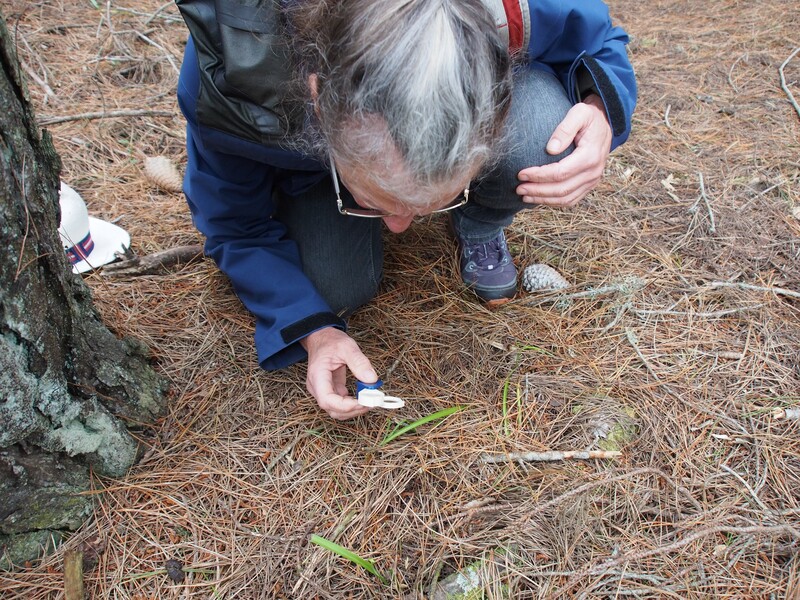
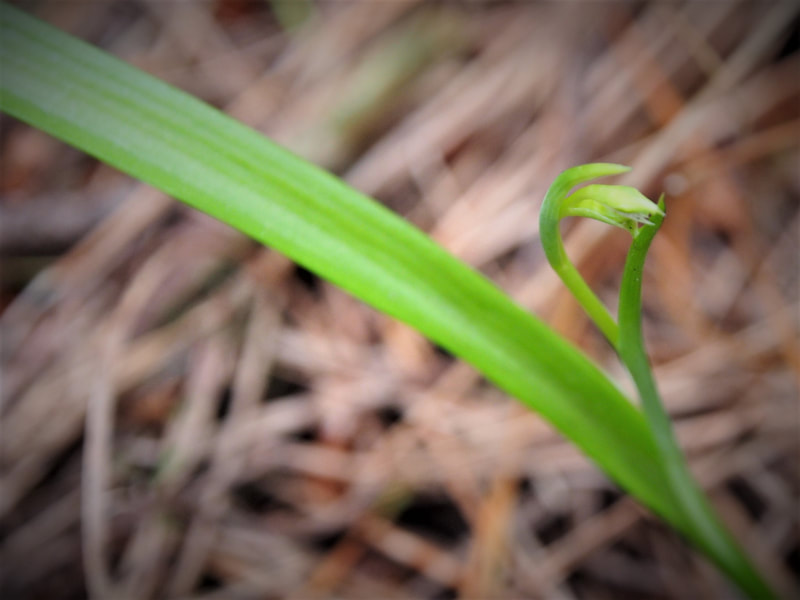
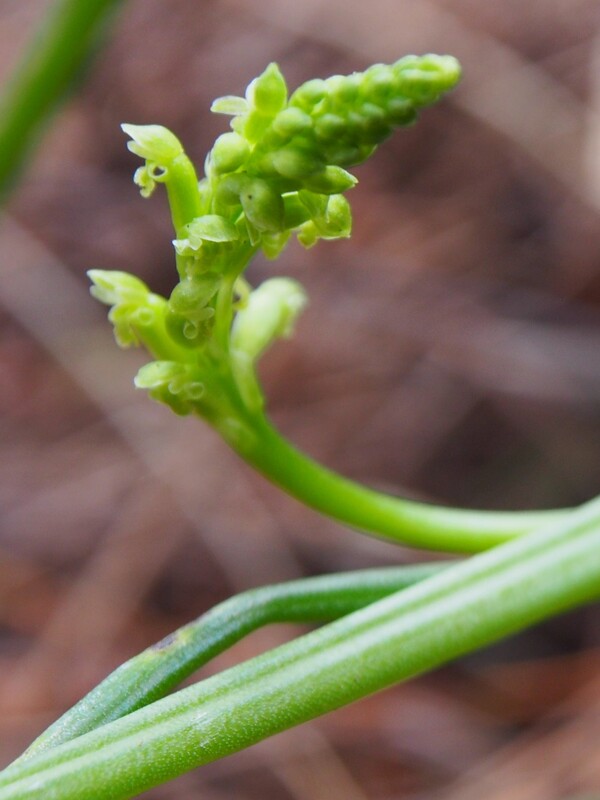
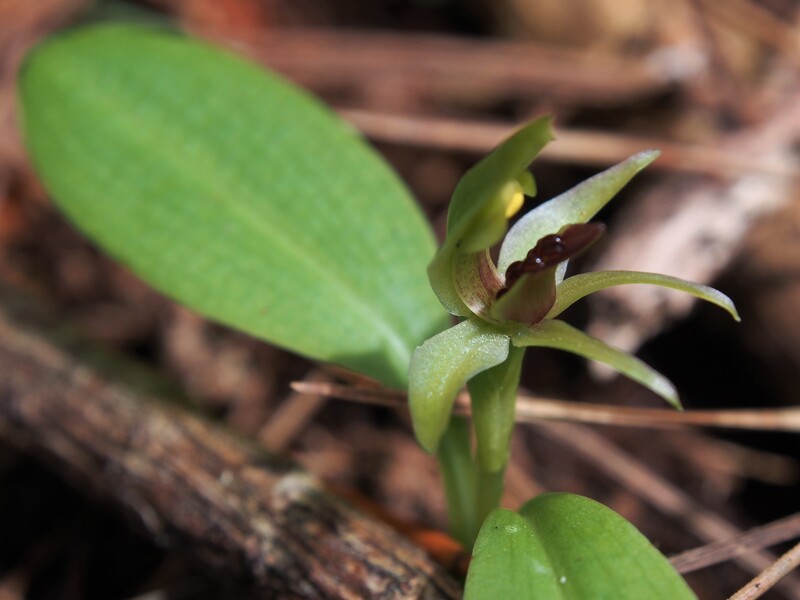
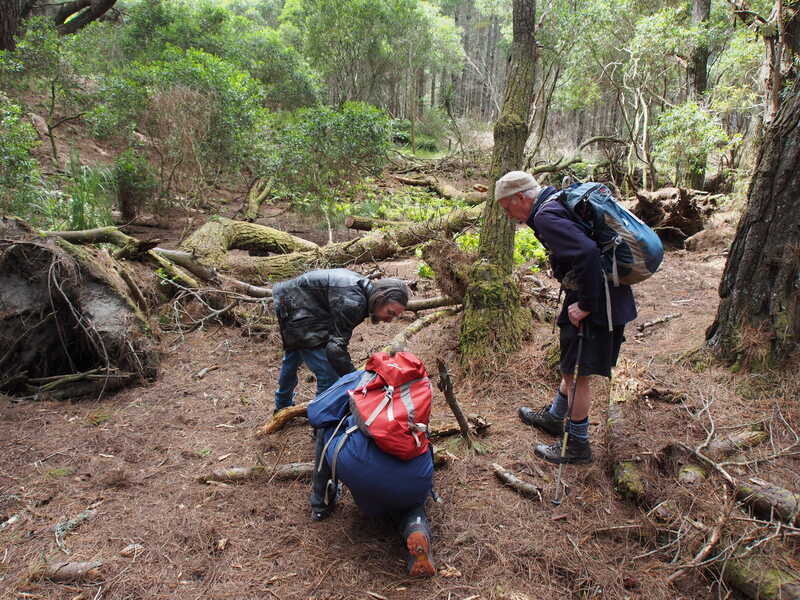
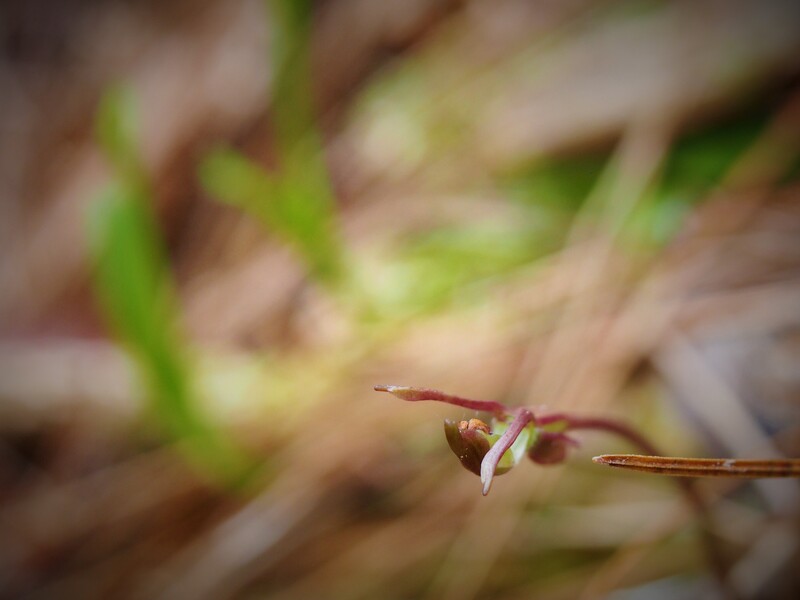
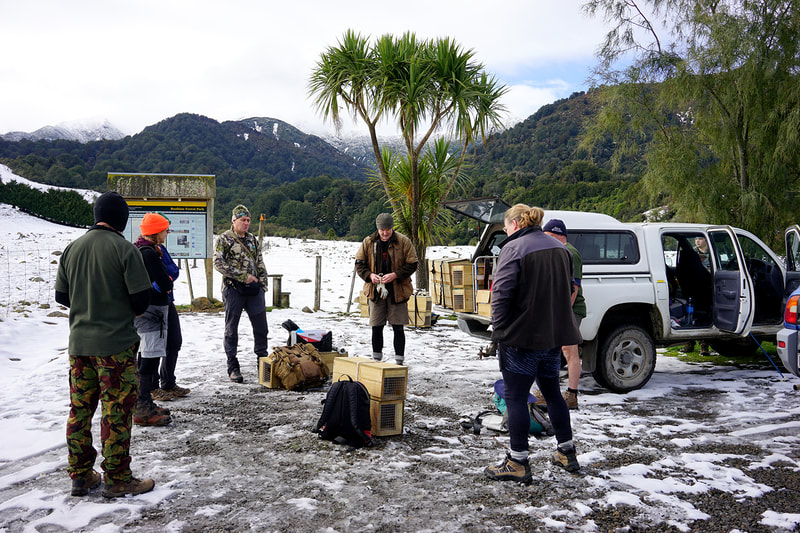
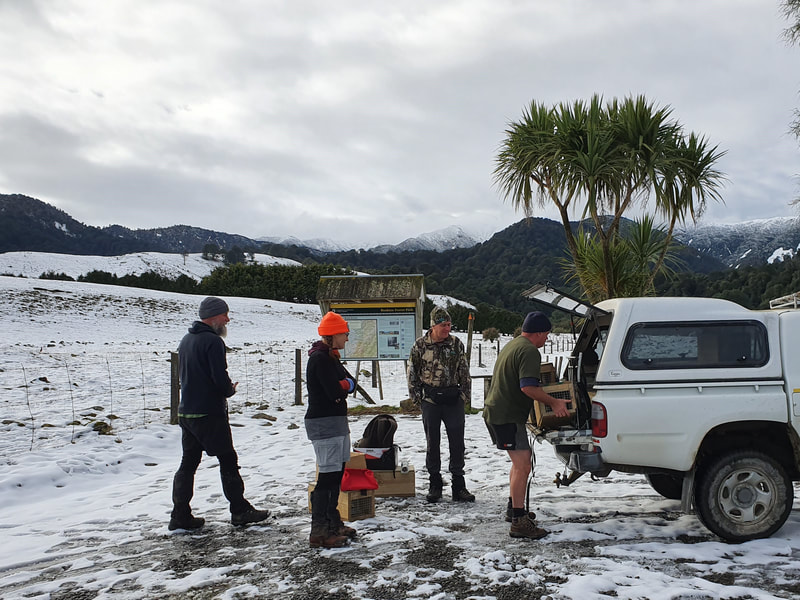
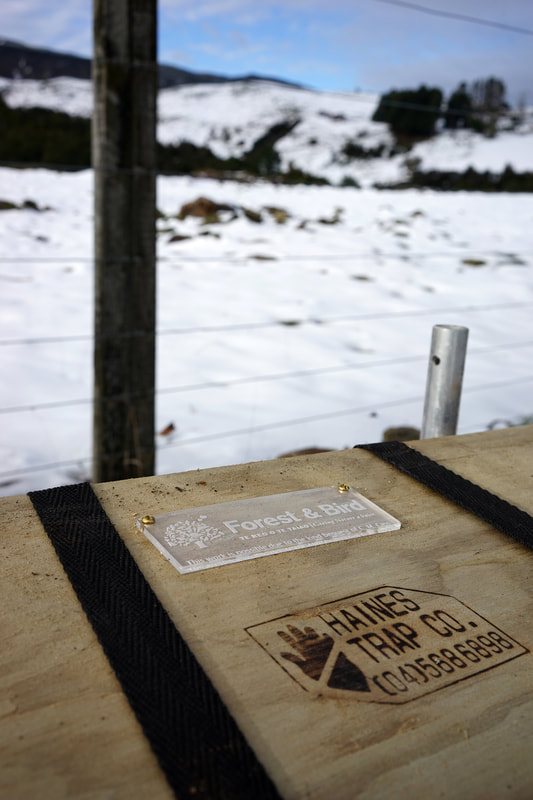
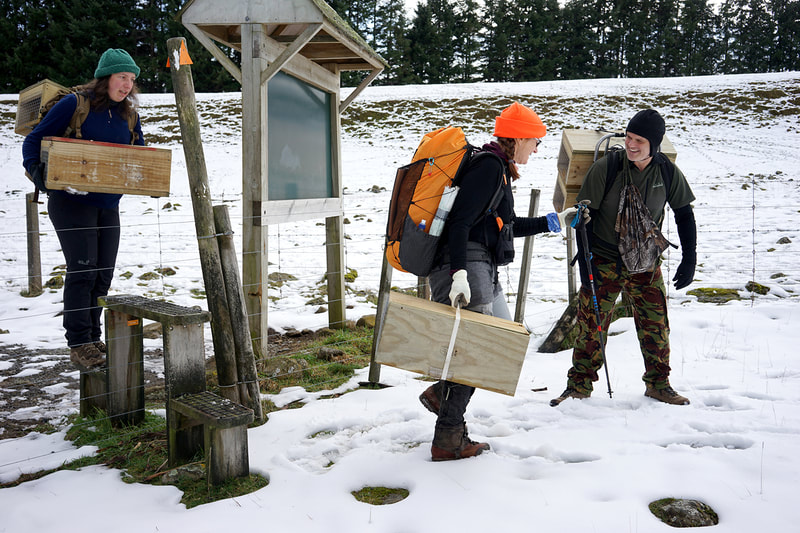
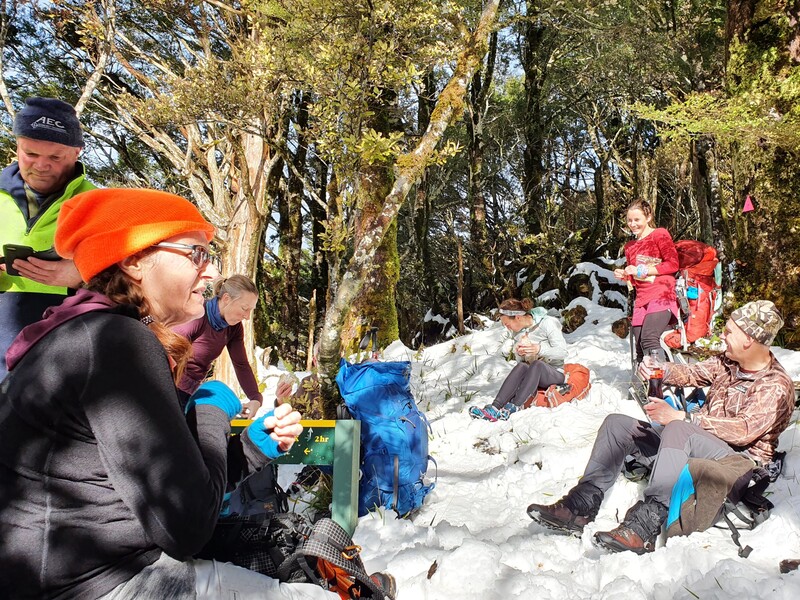
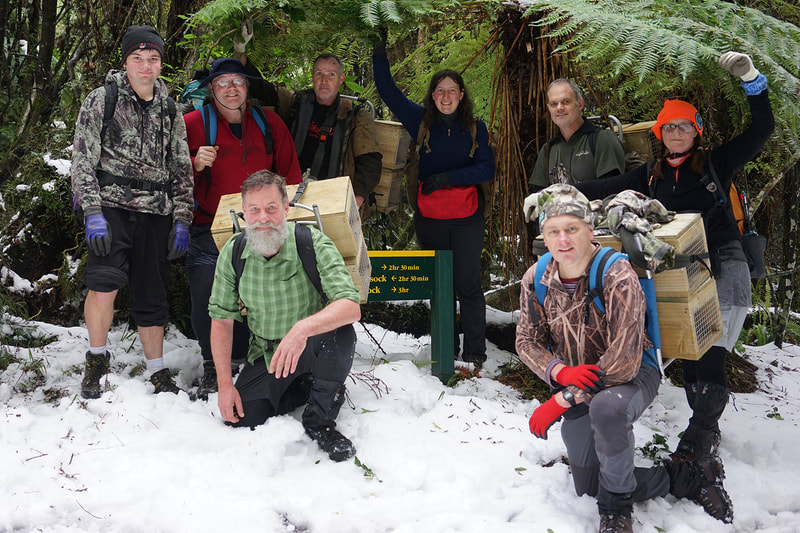
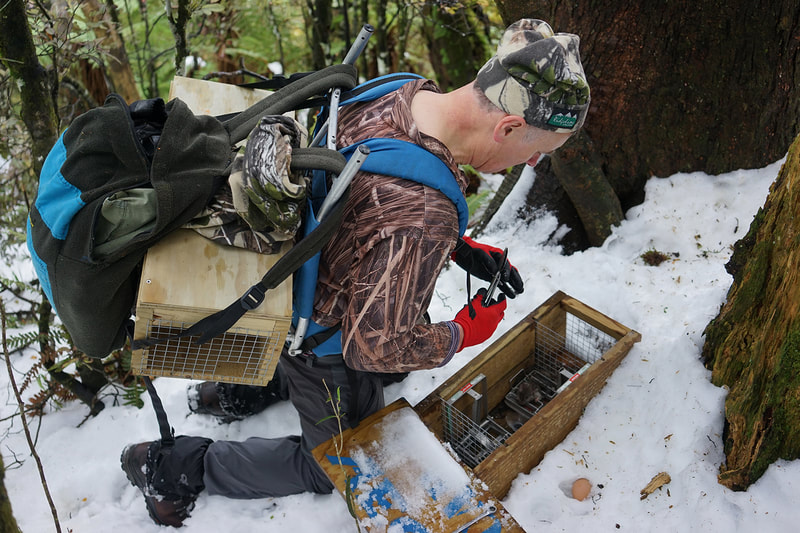
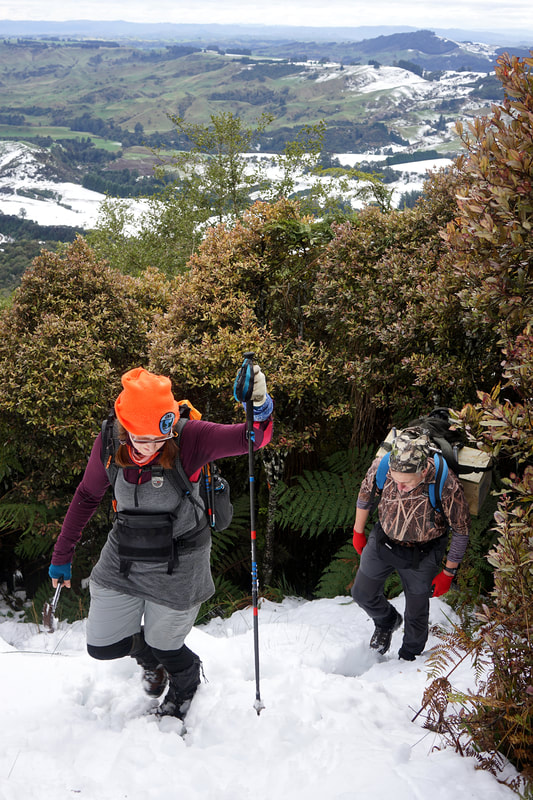
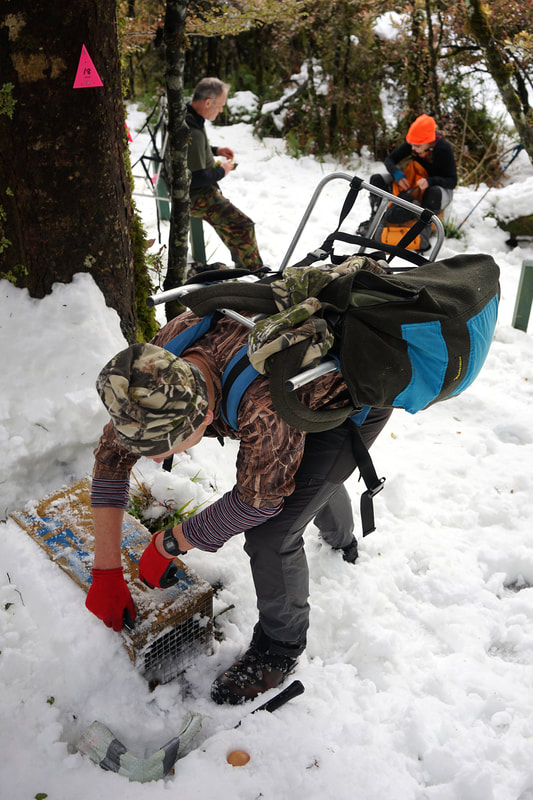
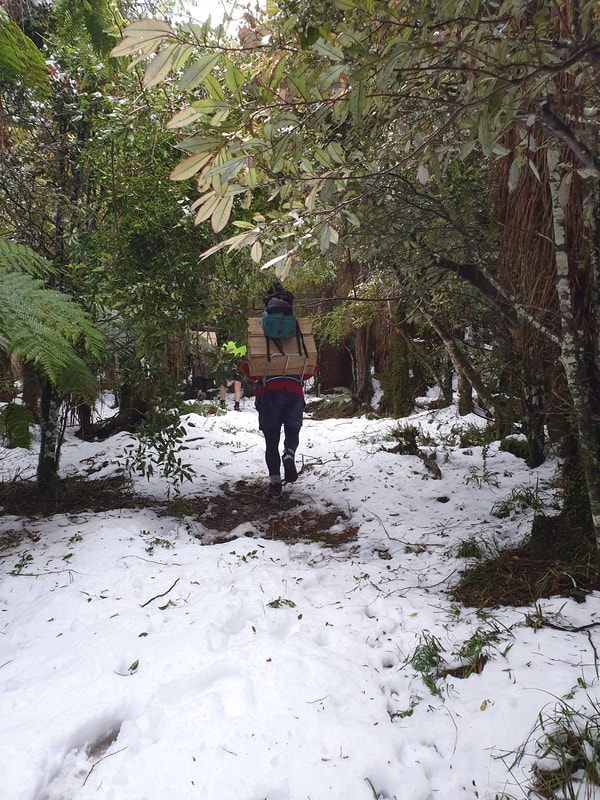
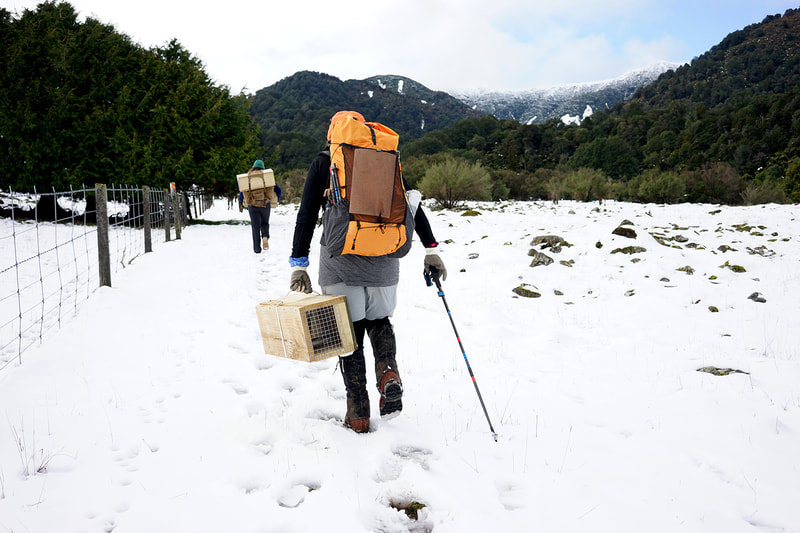
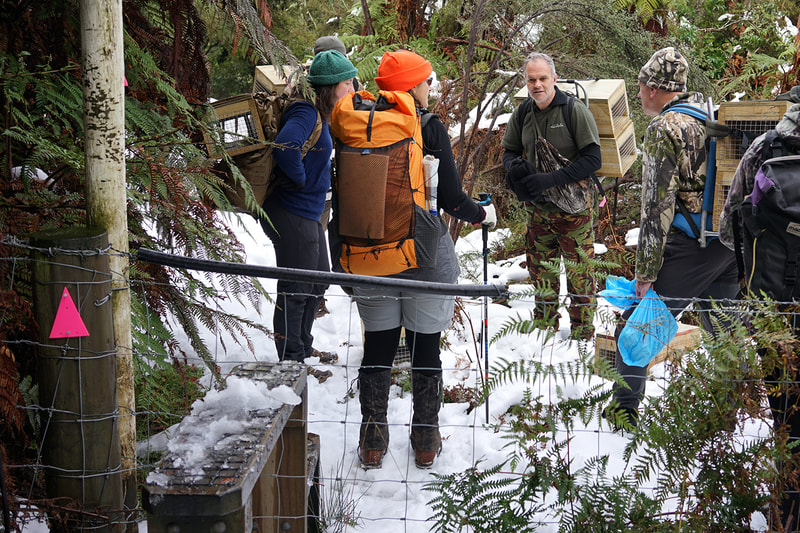
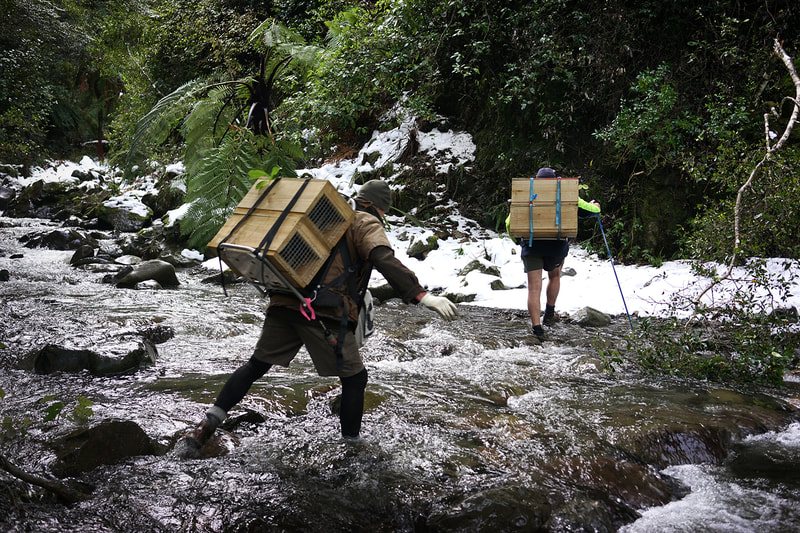
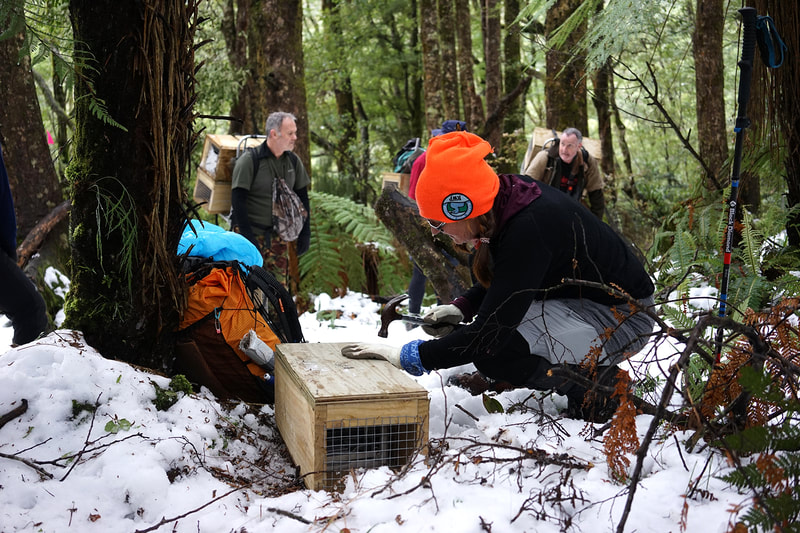
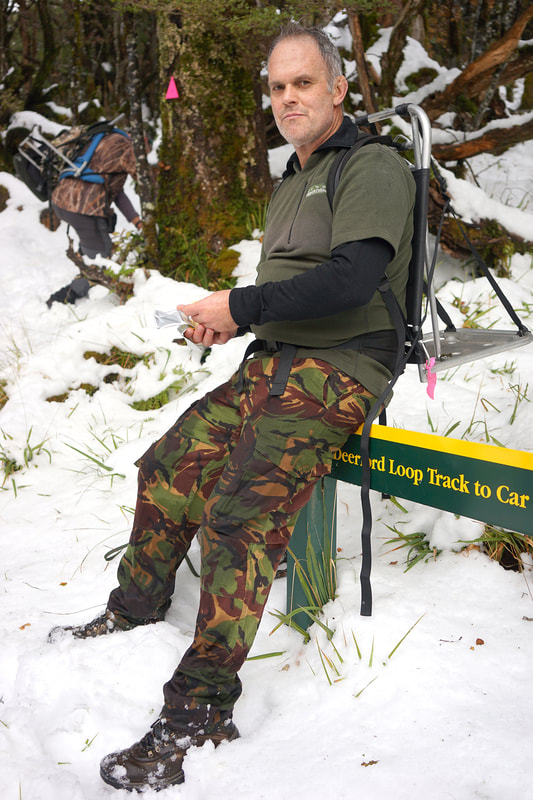
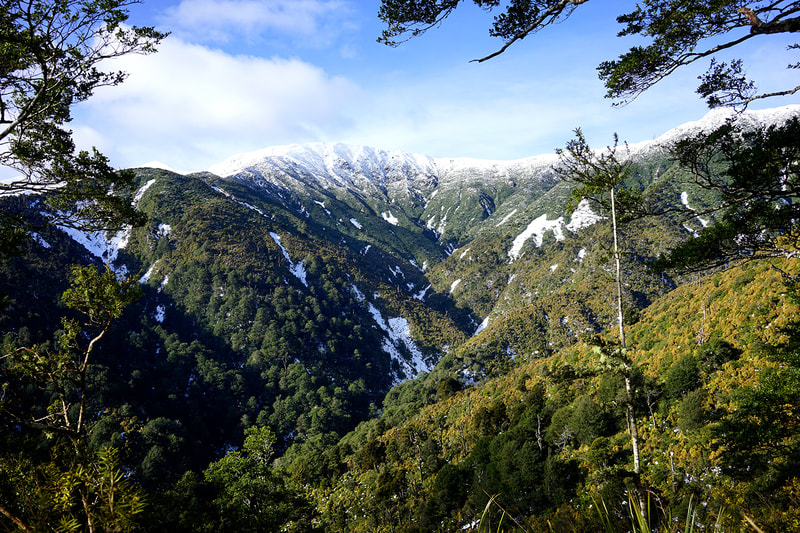
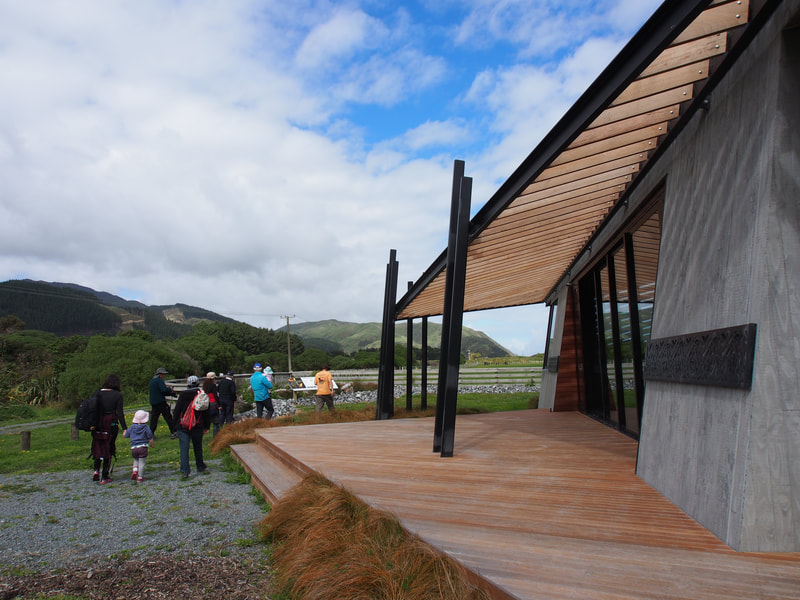
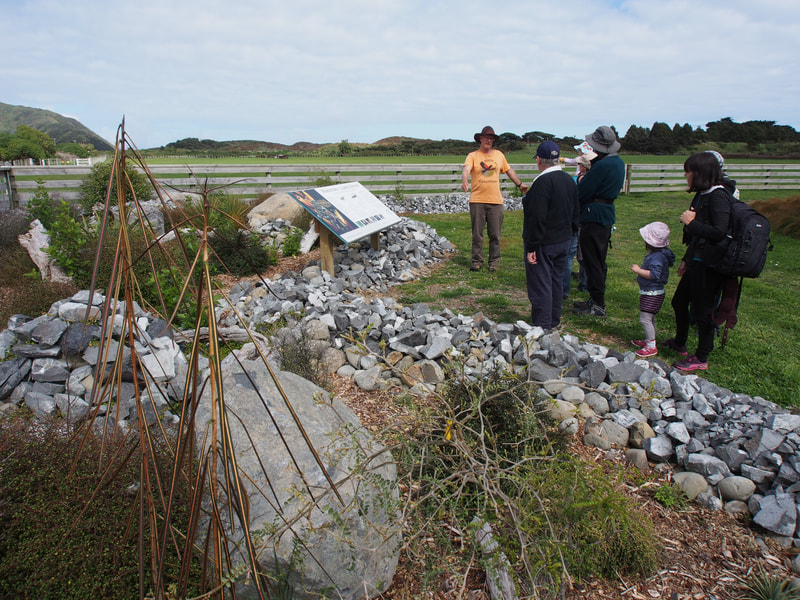
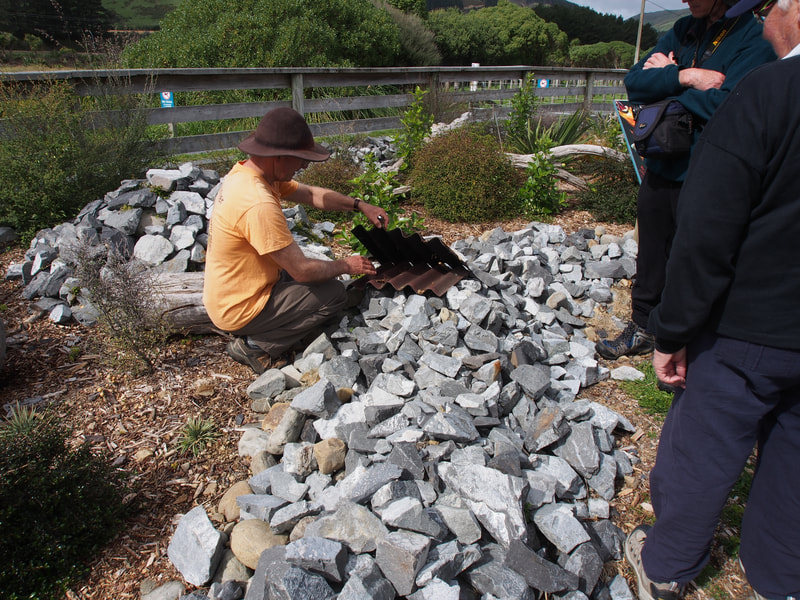
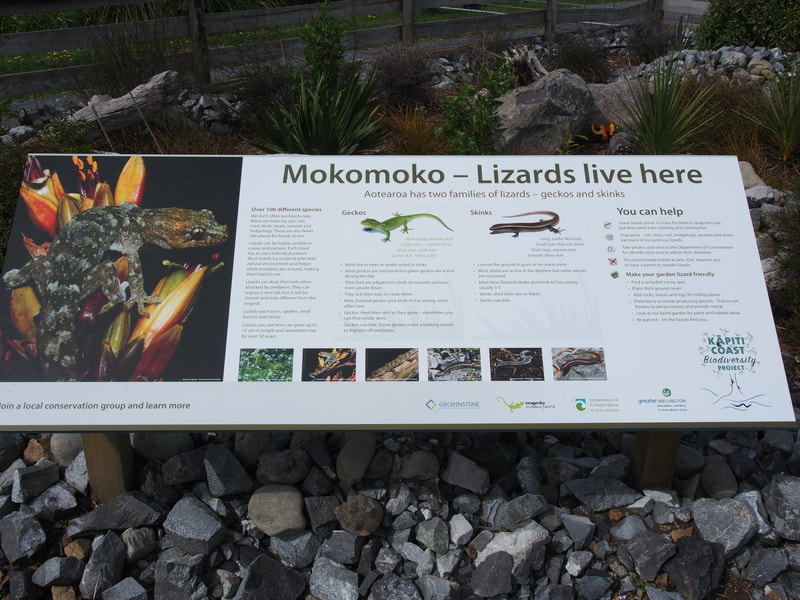
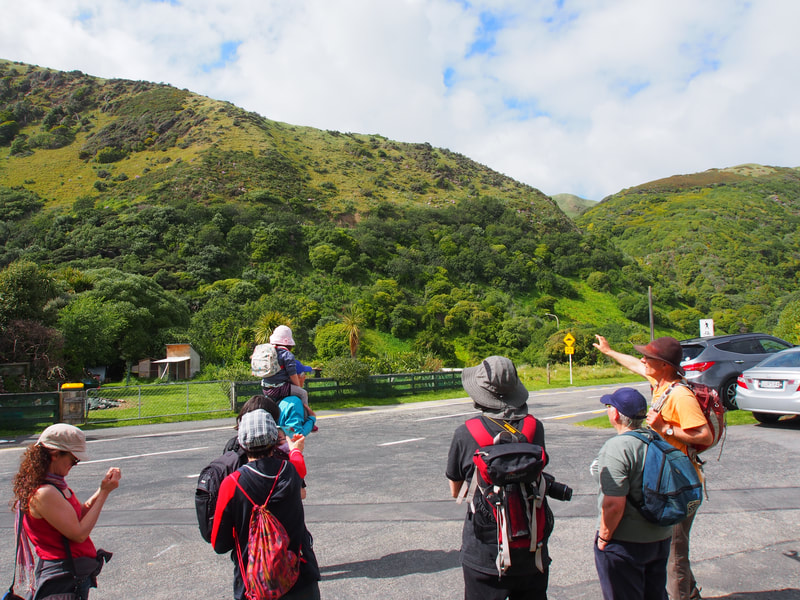
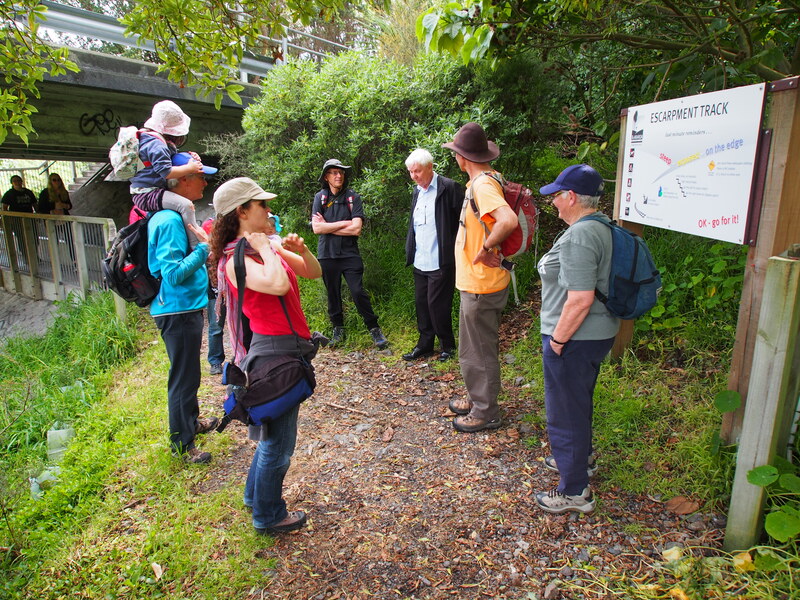
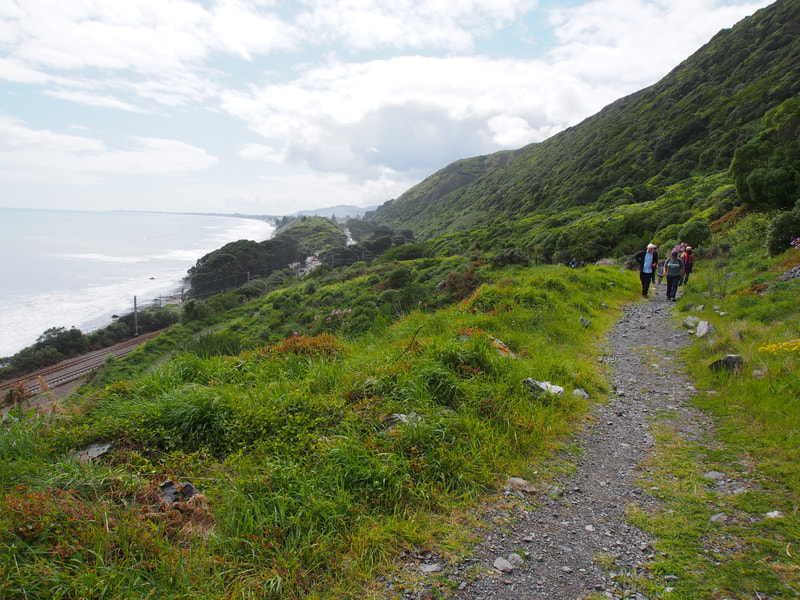
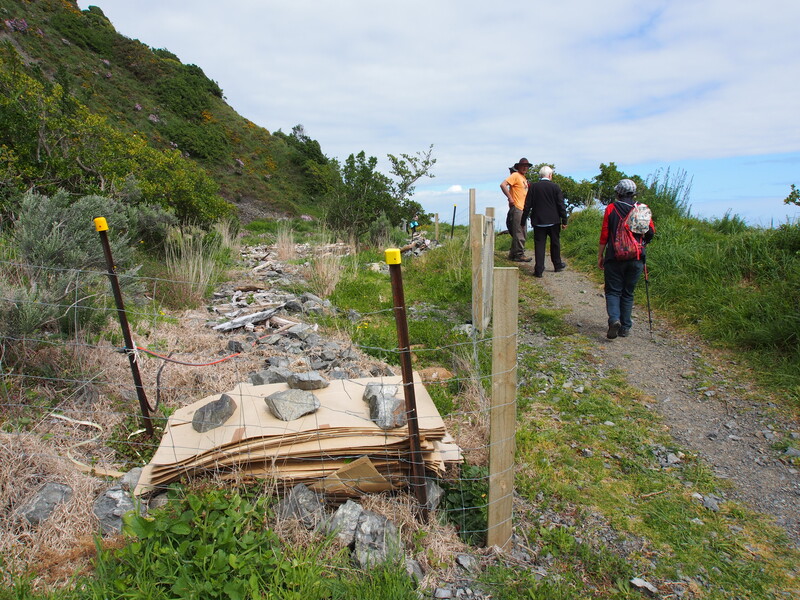
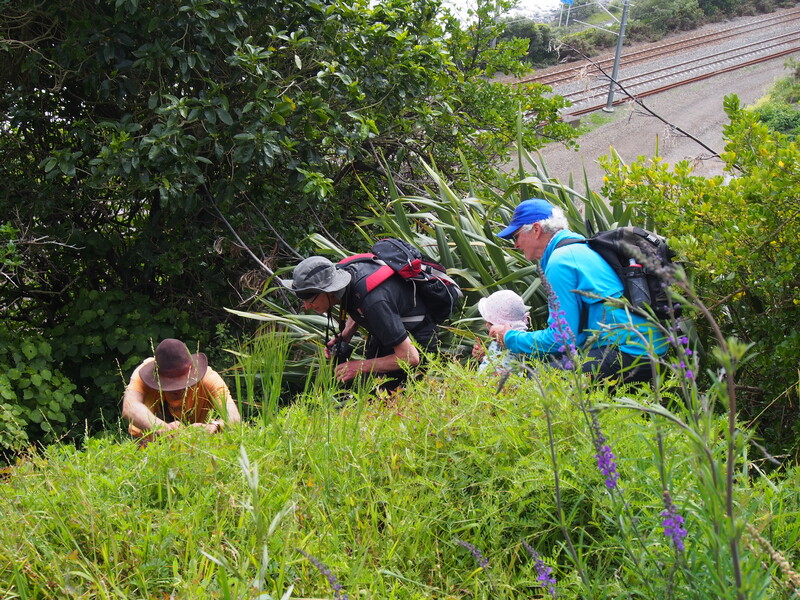
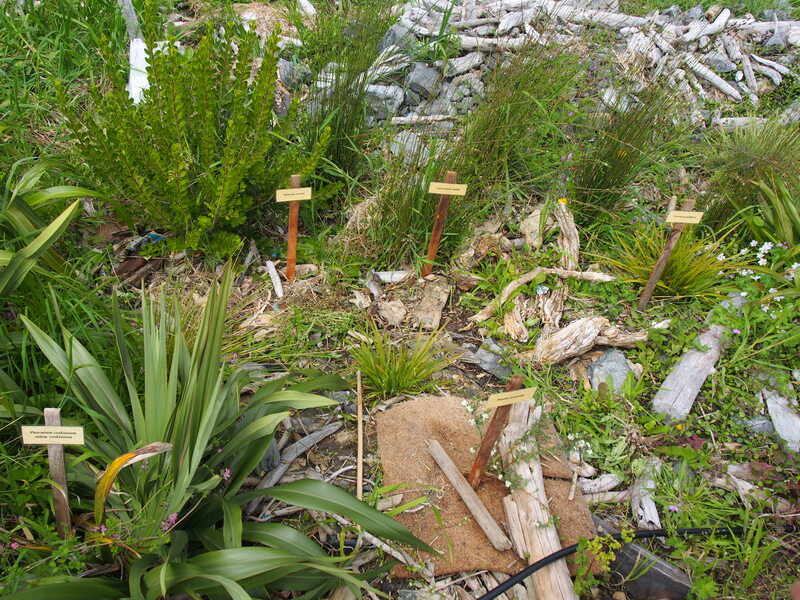
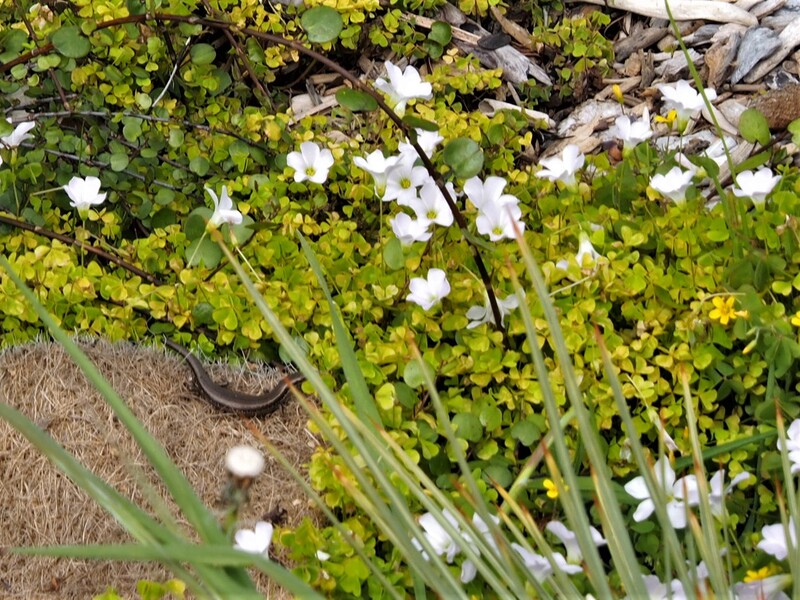
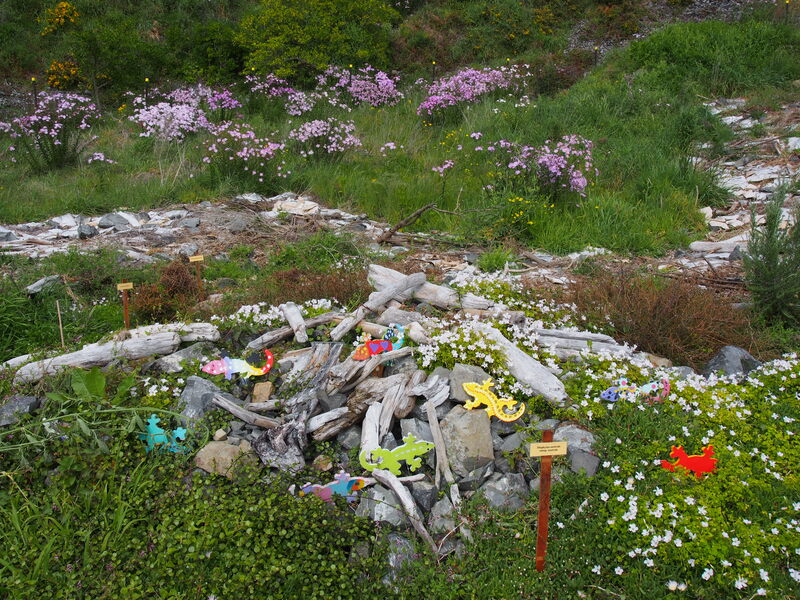
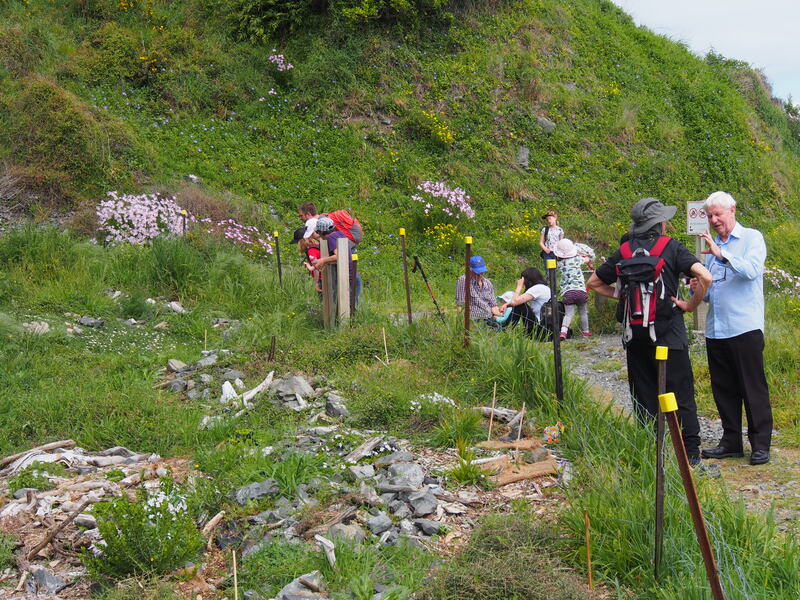
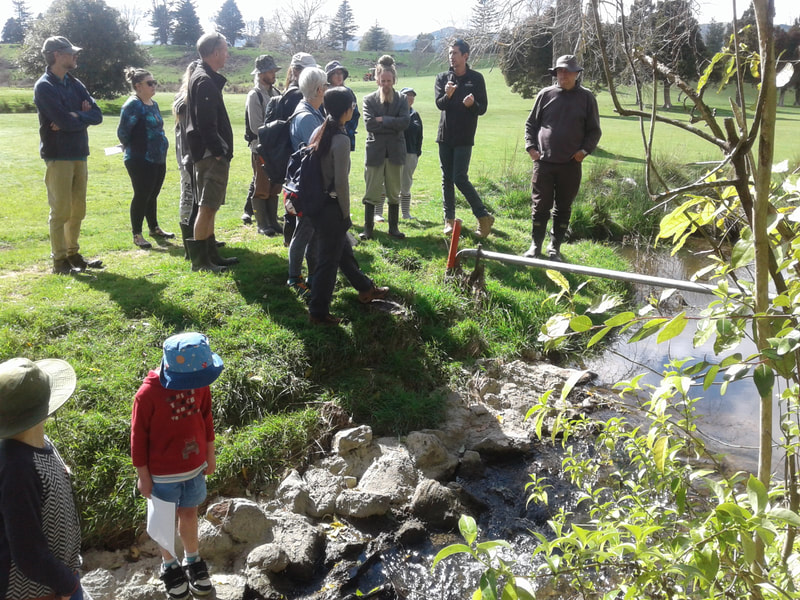
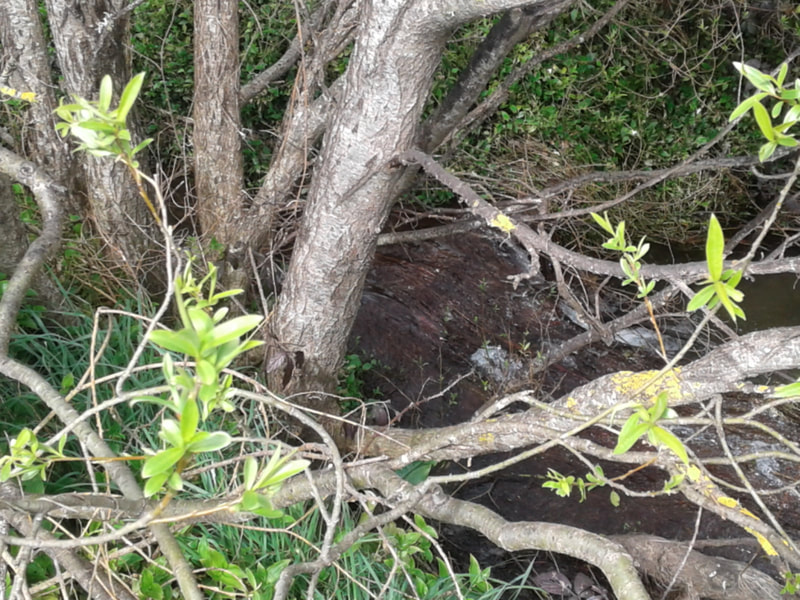

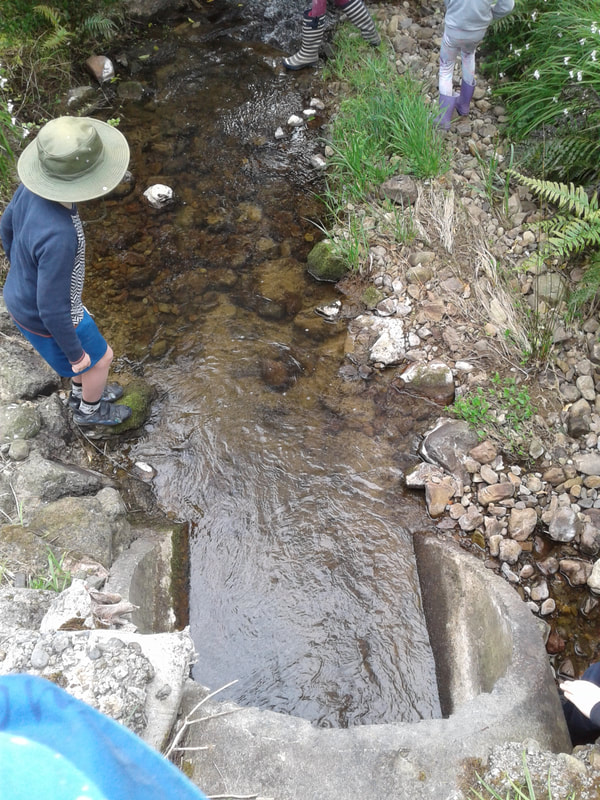
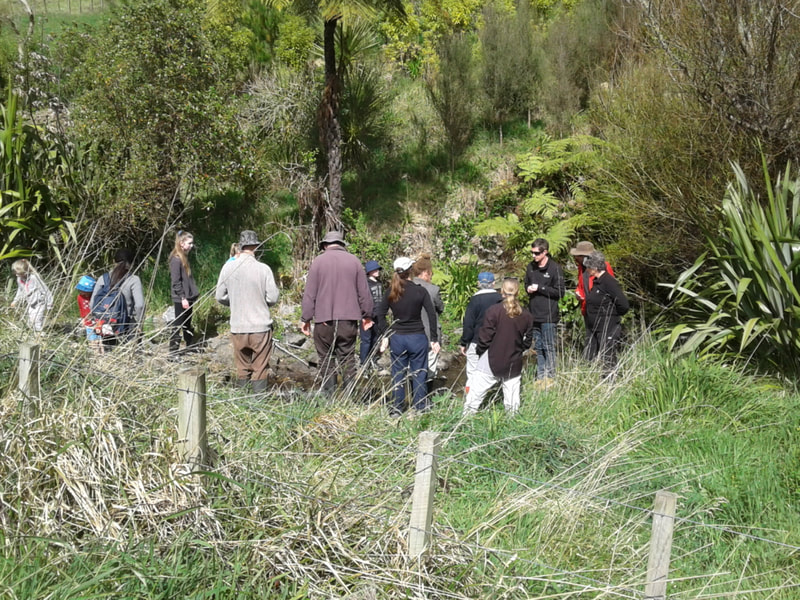
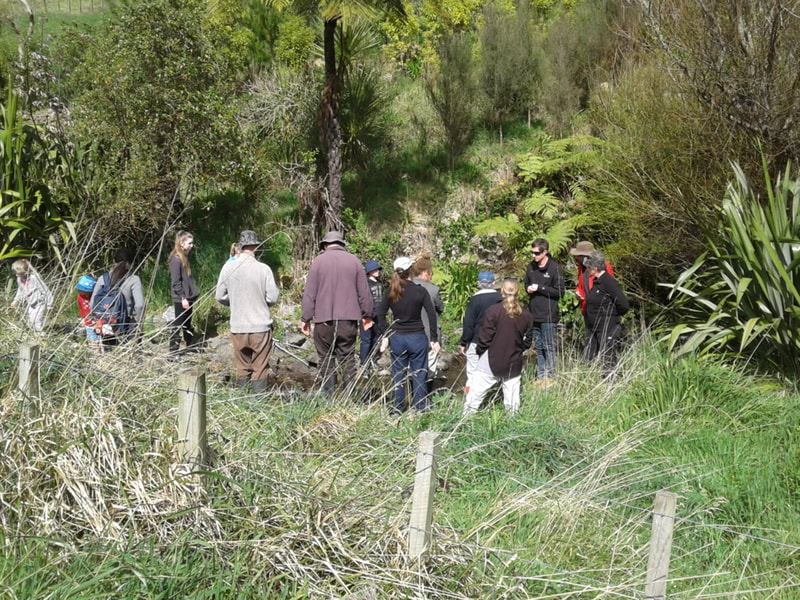
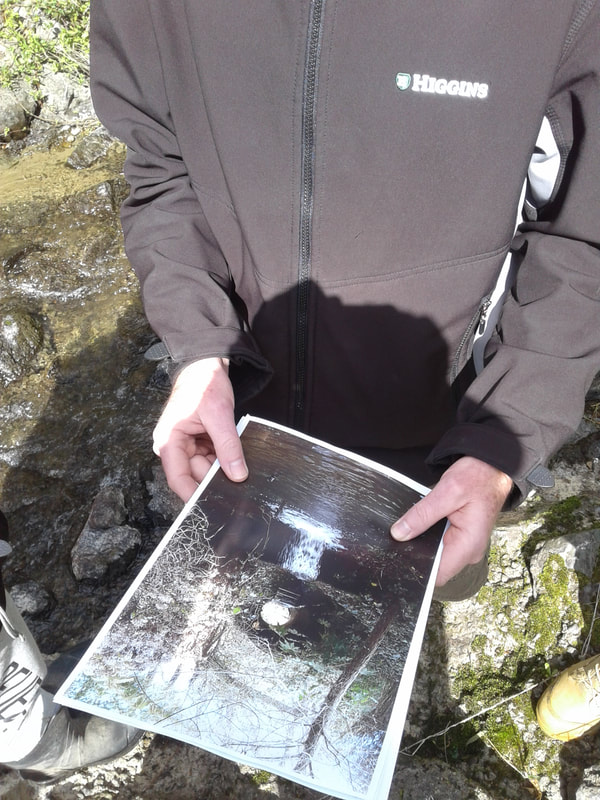
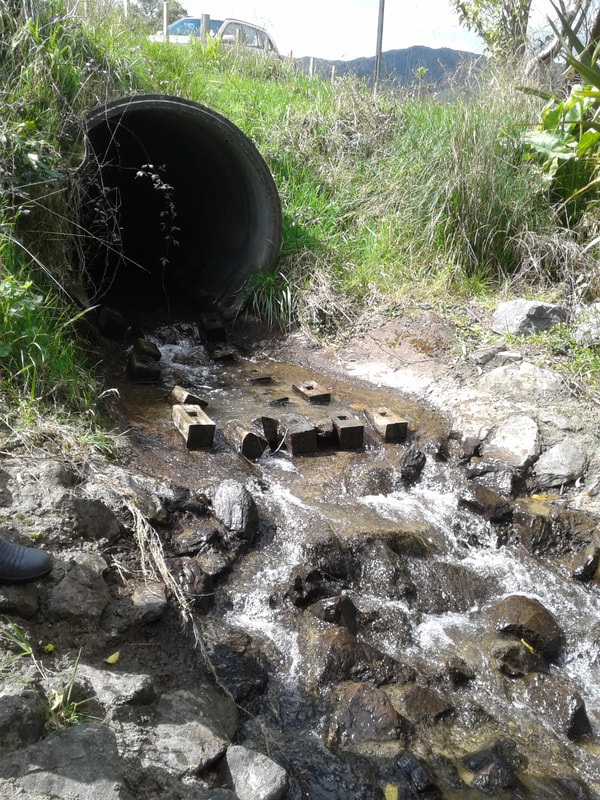
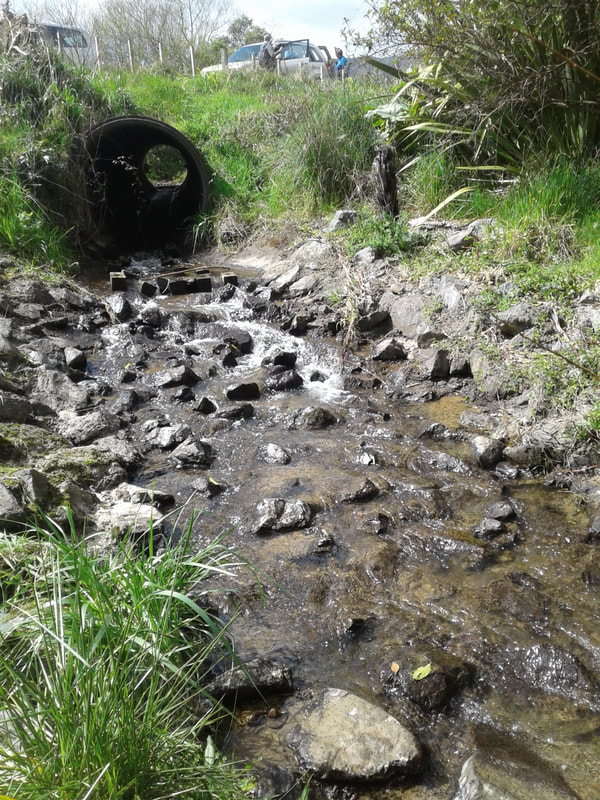
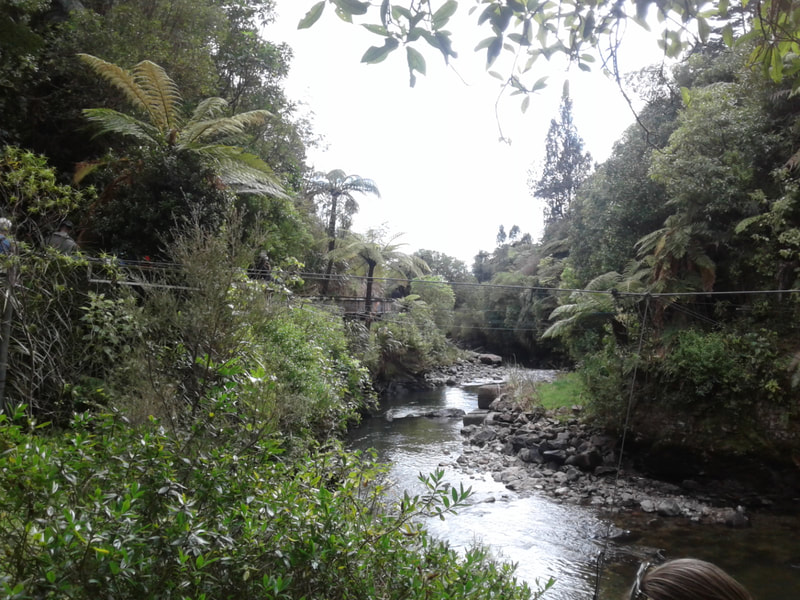
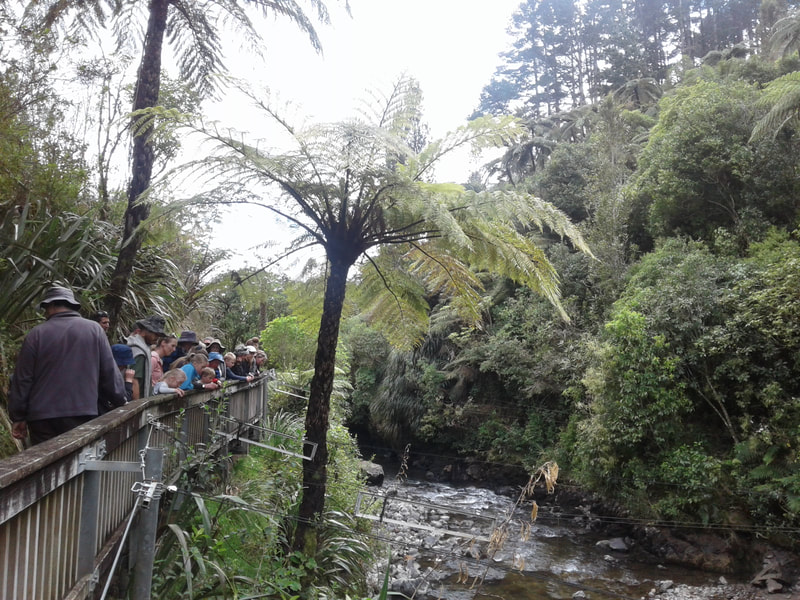
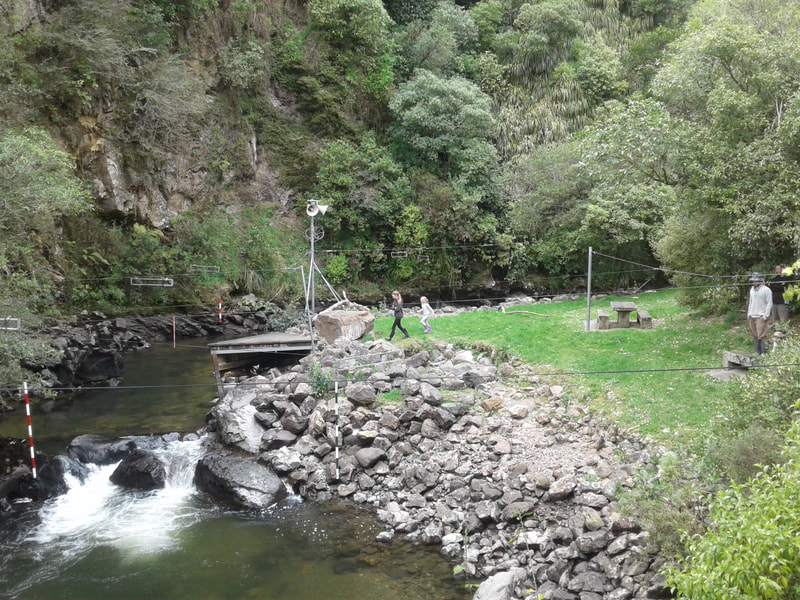
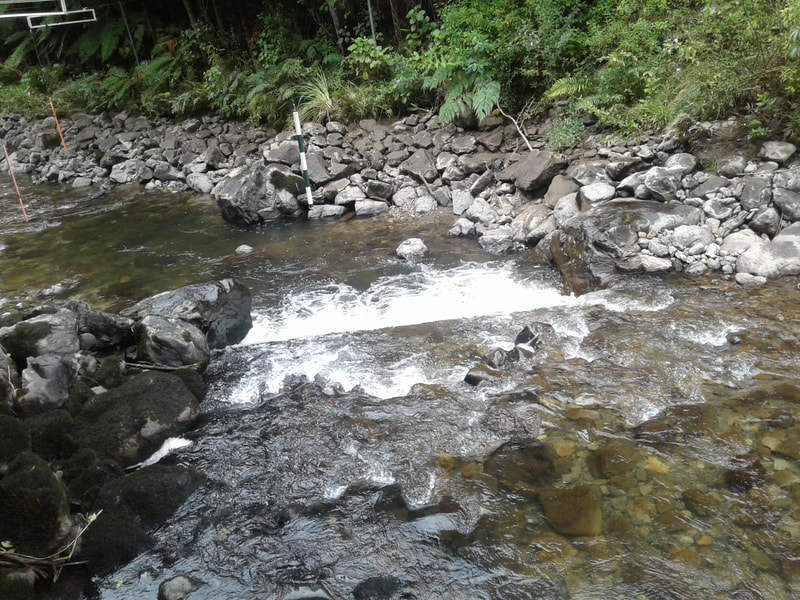
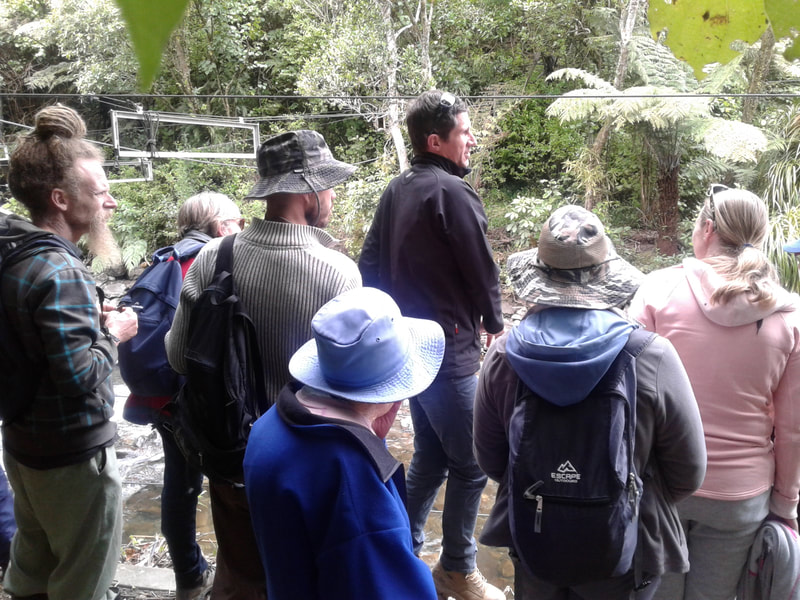
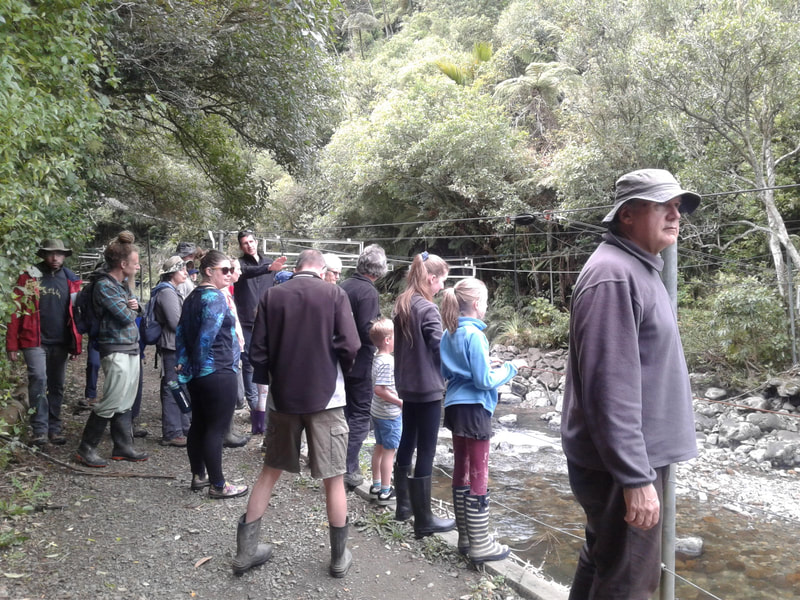
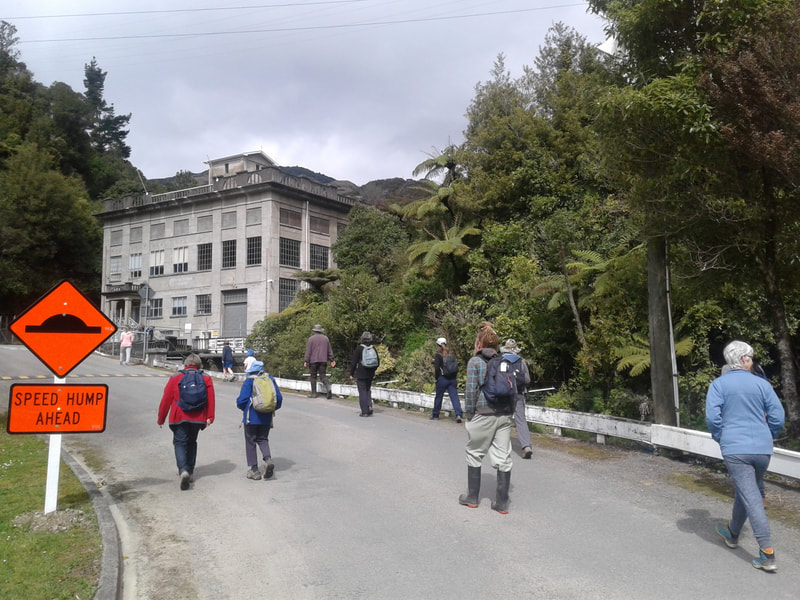
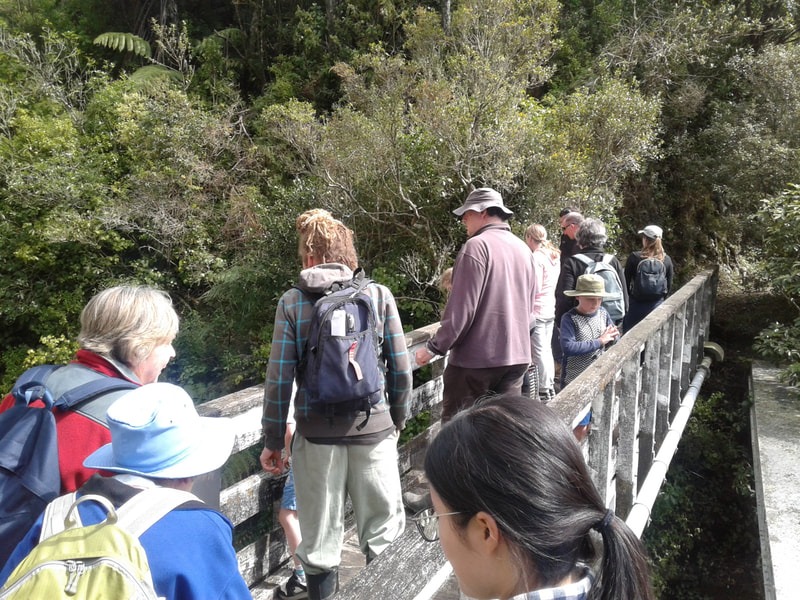
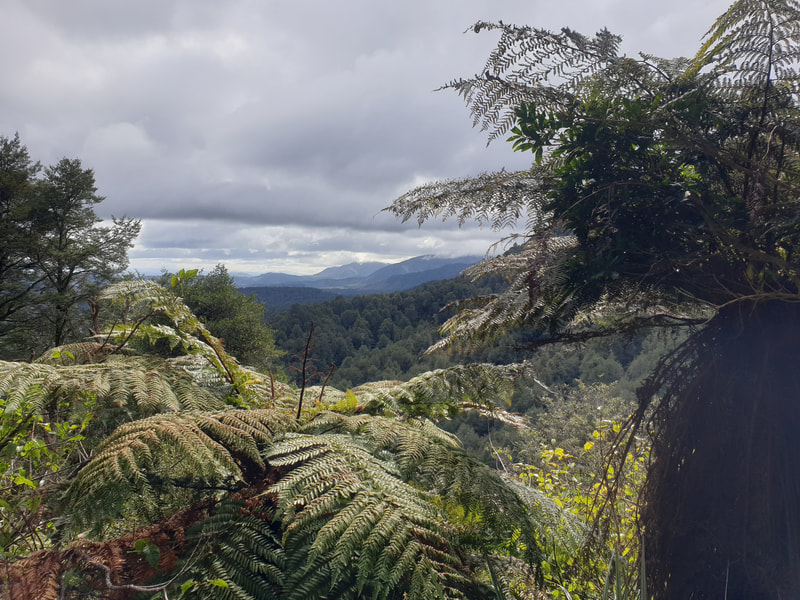
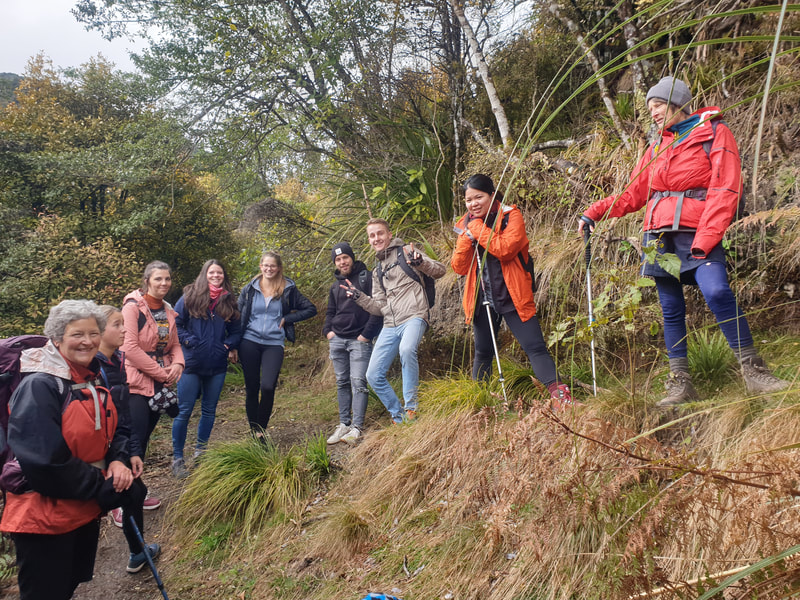
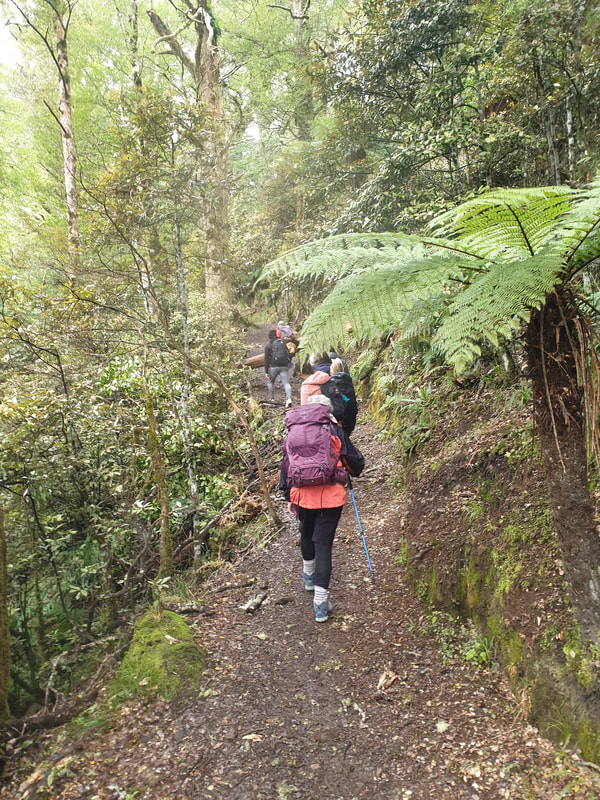
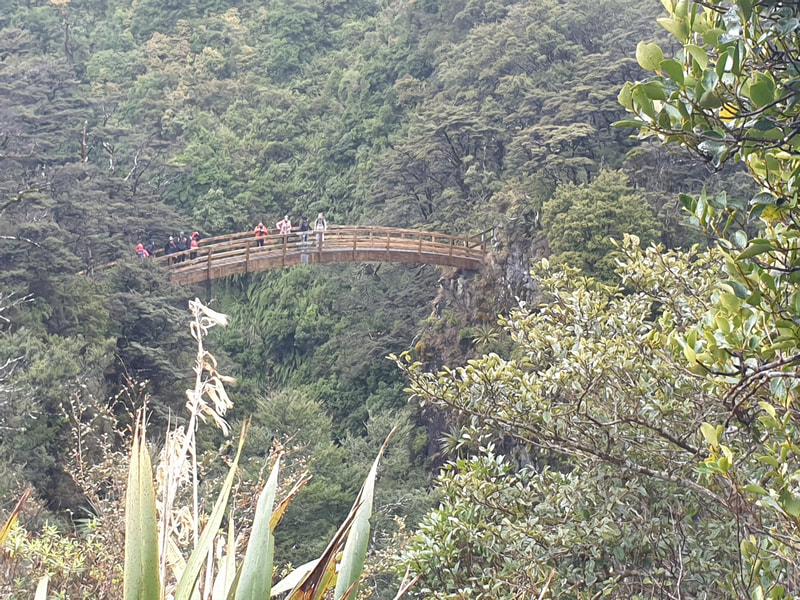
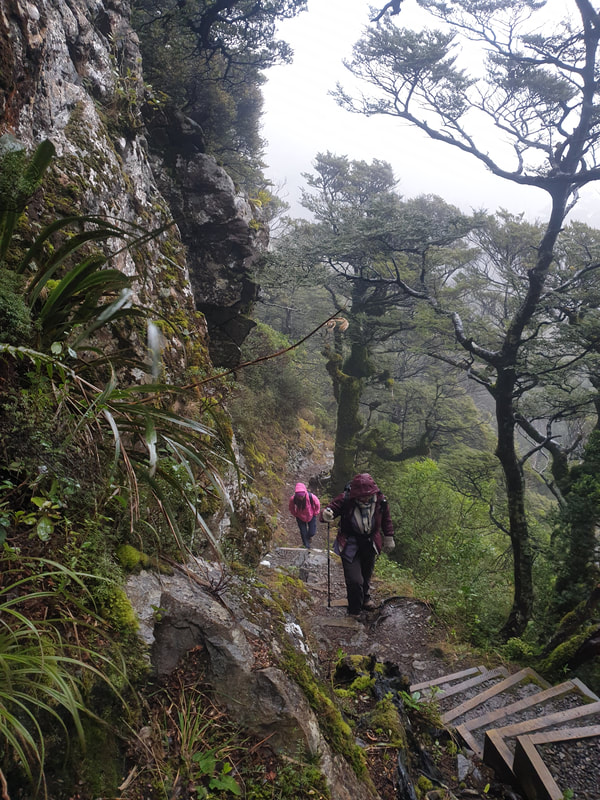
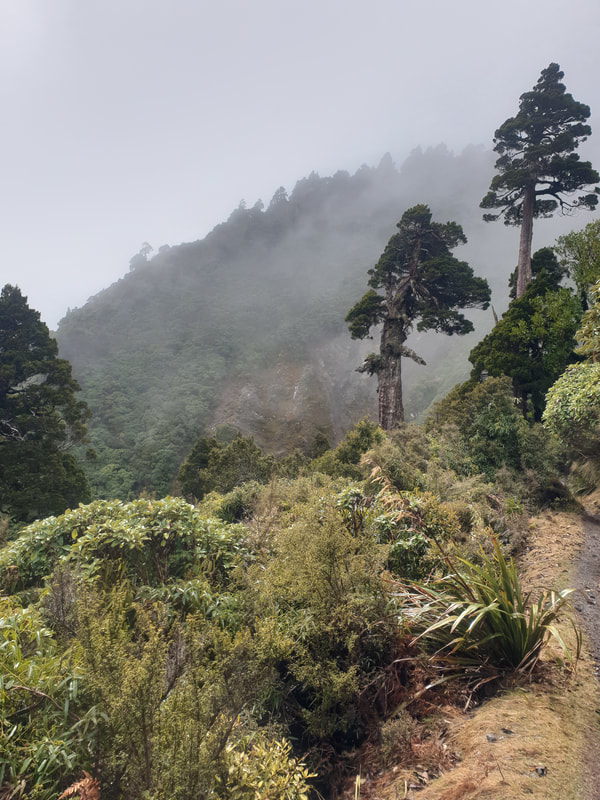
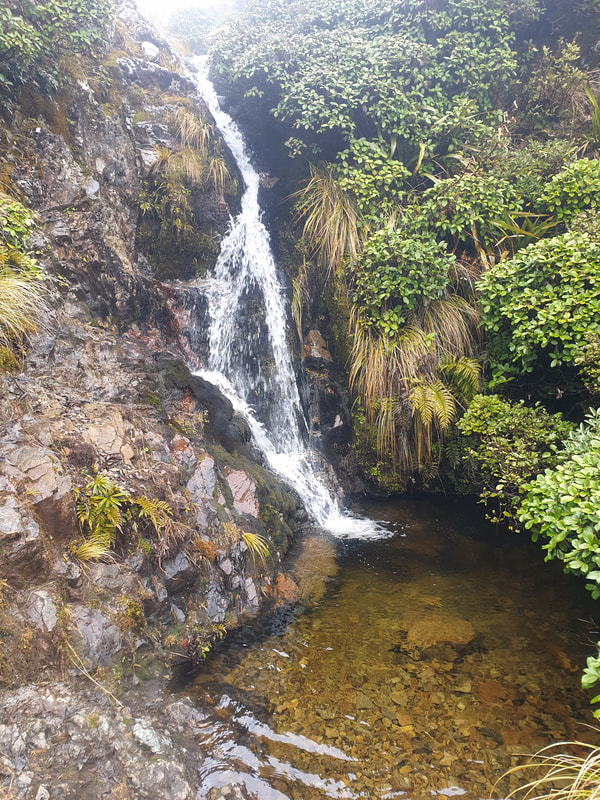
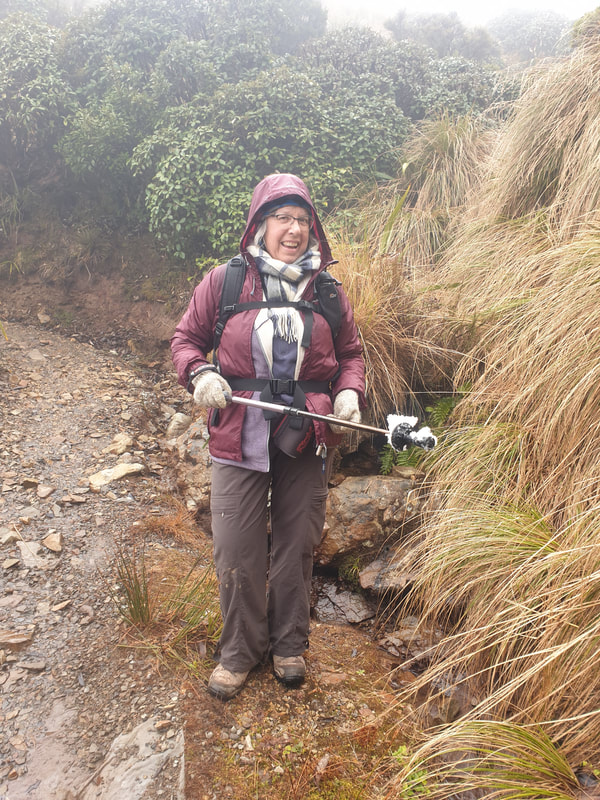
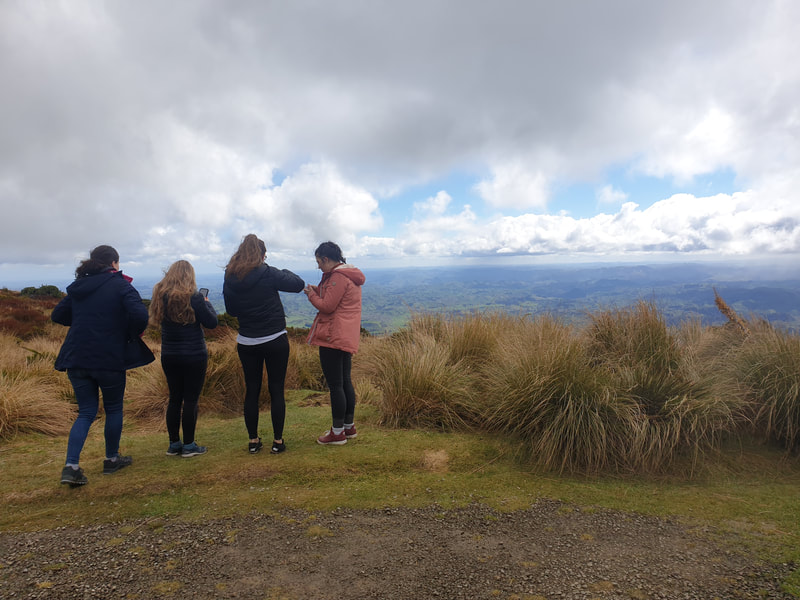
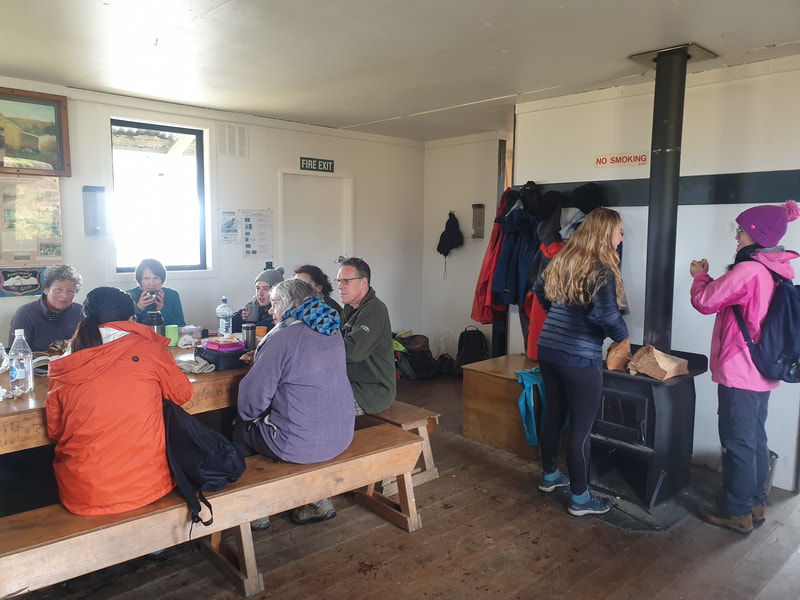
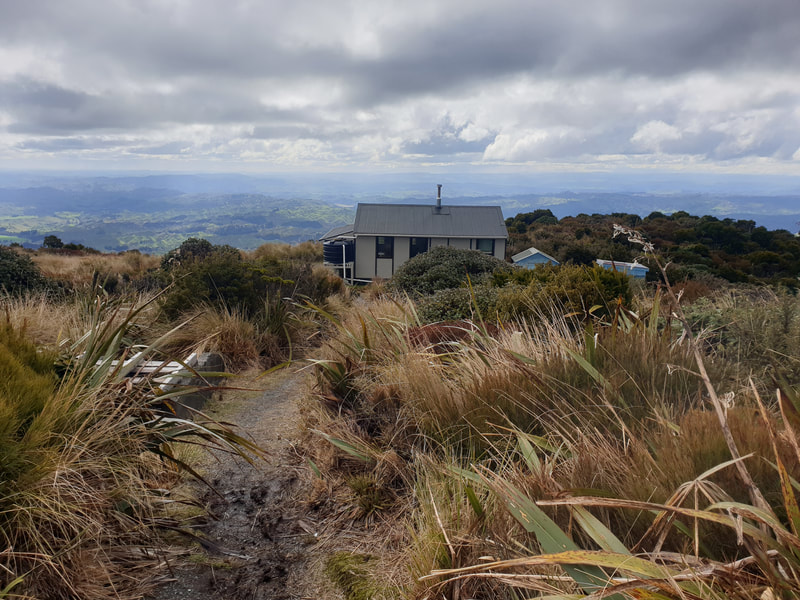
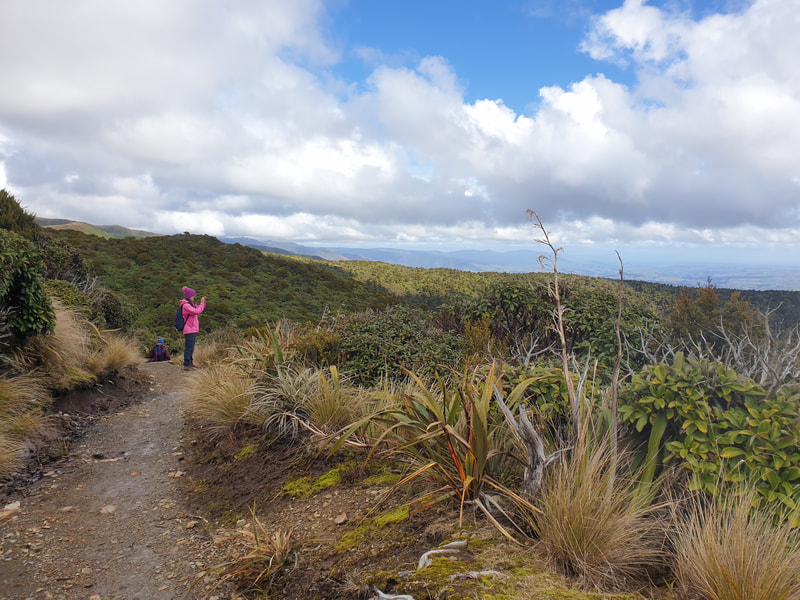
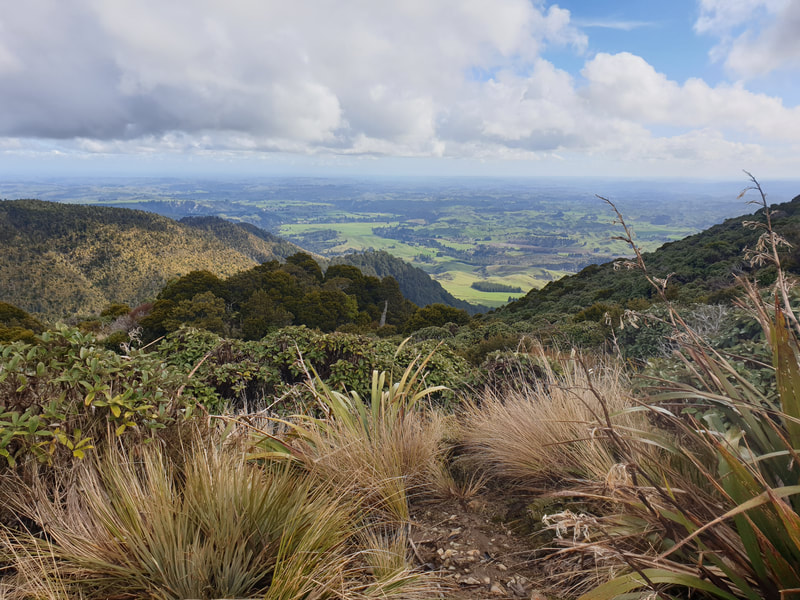
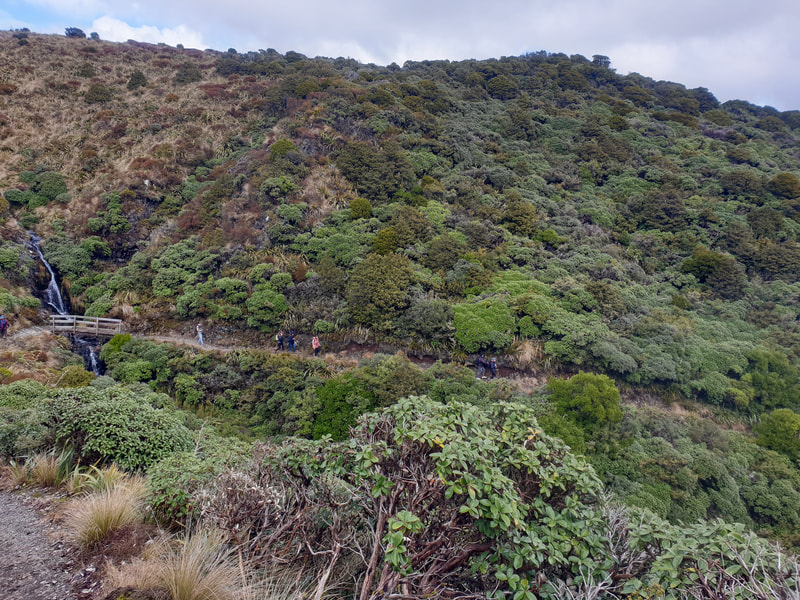












 RSS Feed
RSS Feed